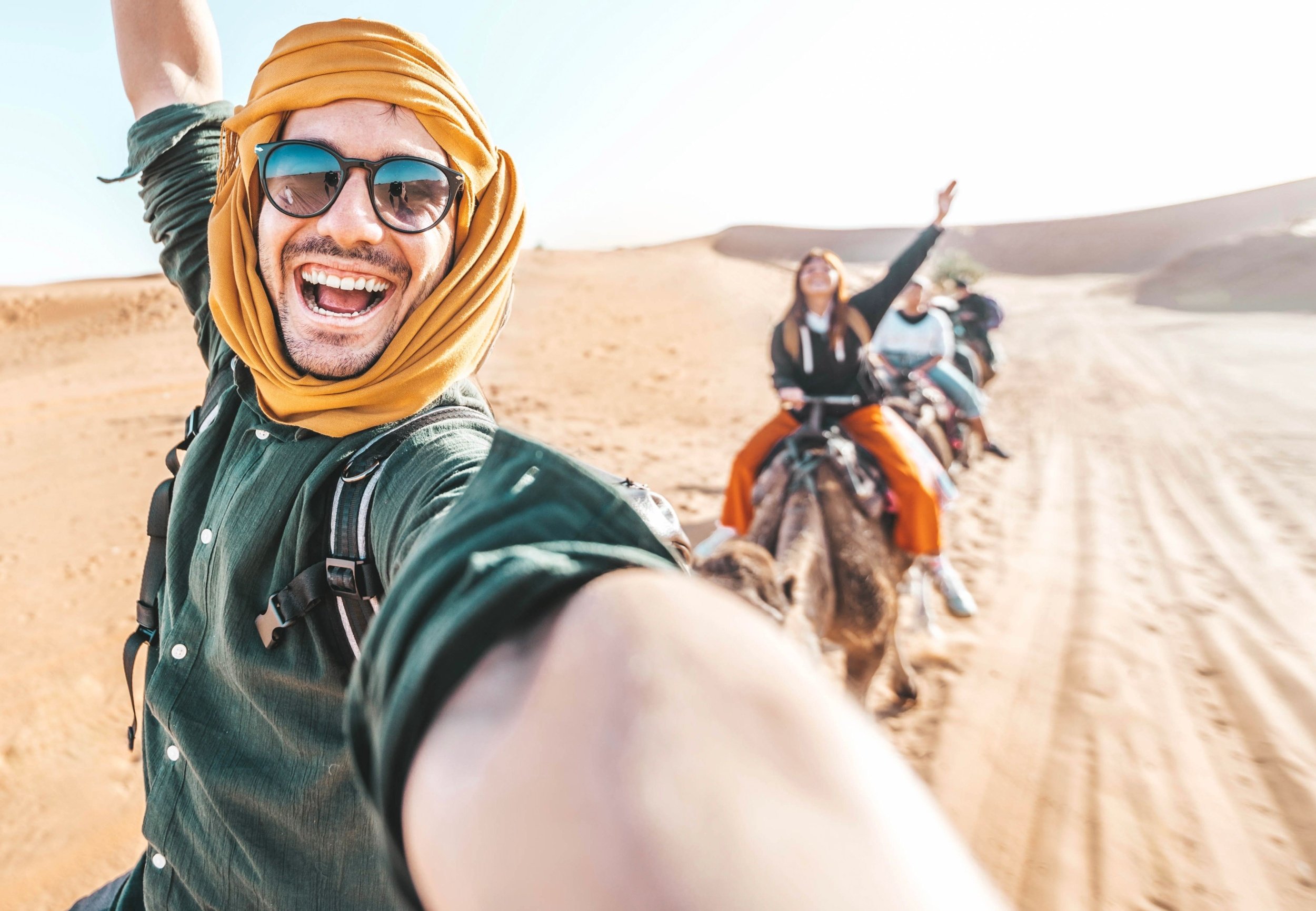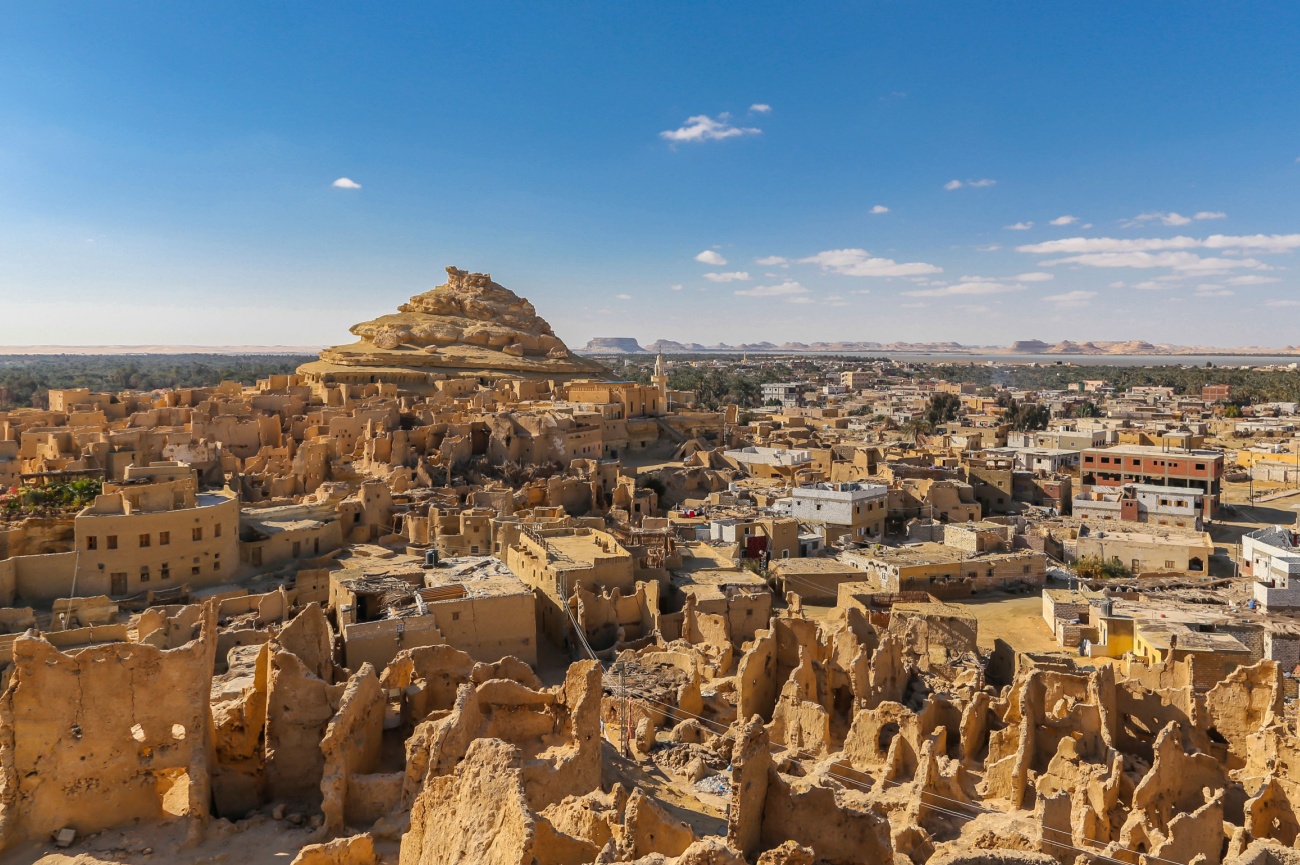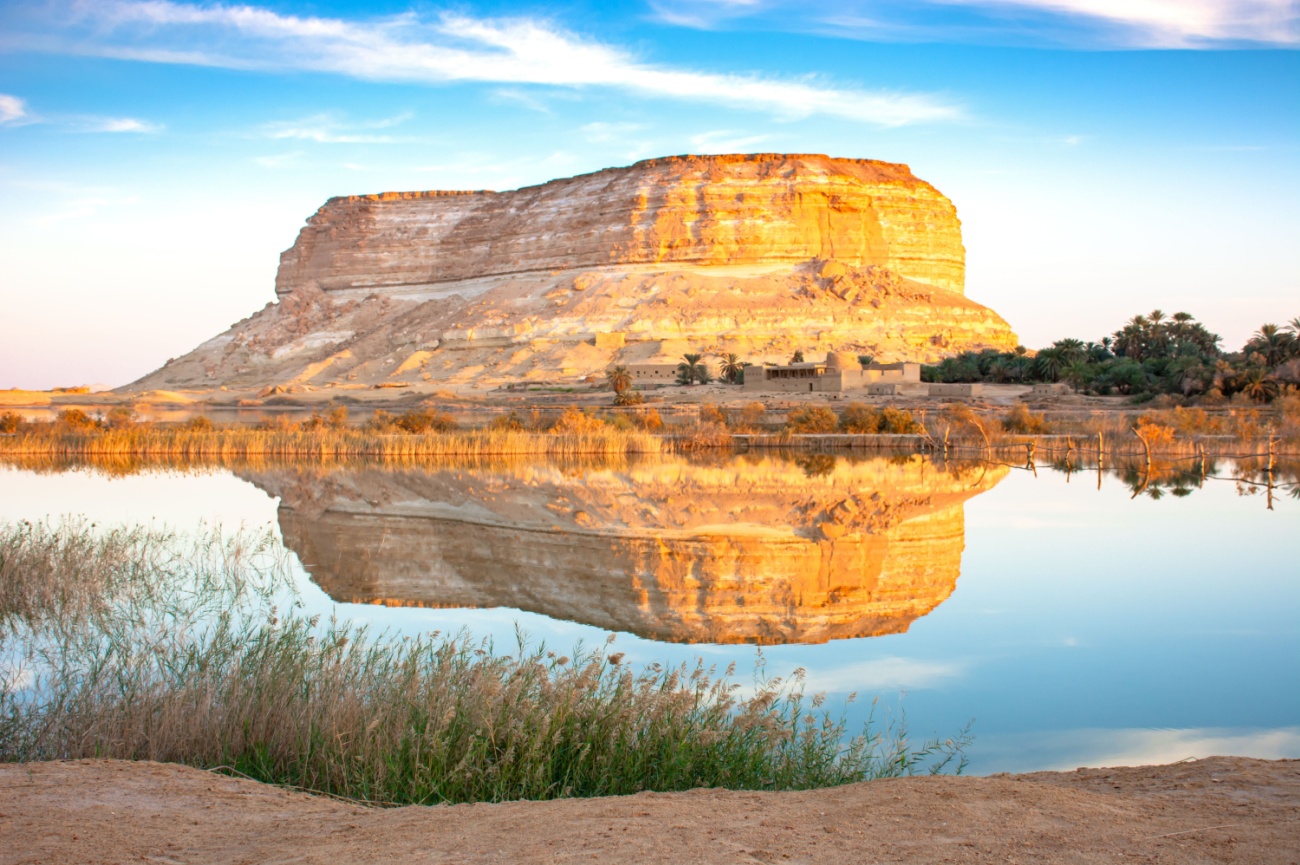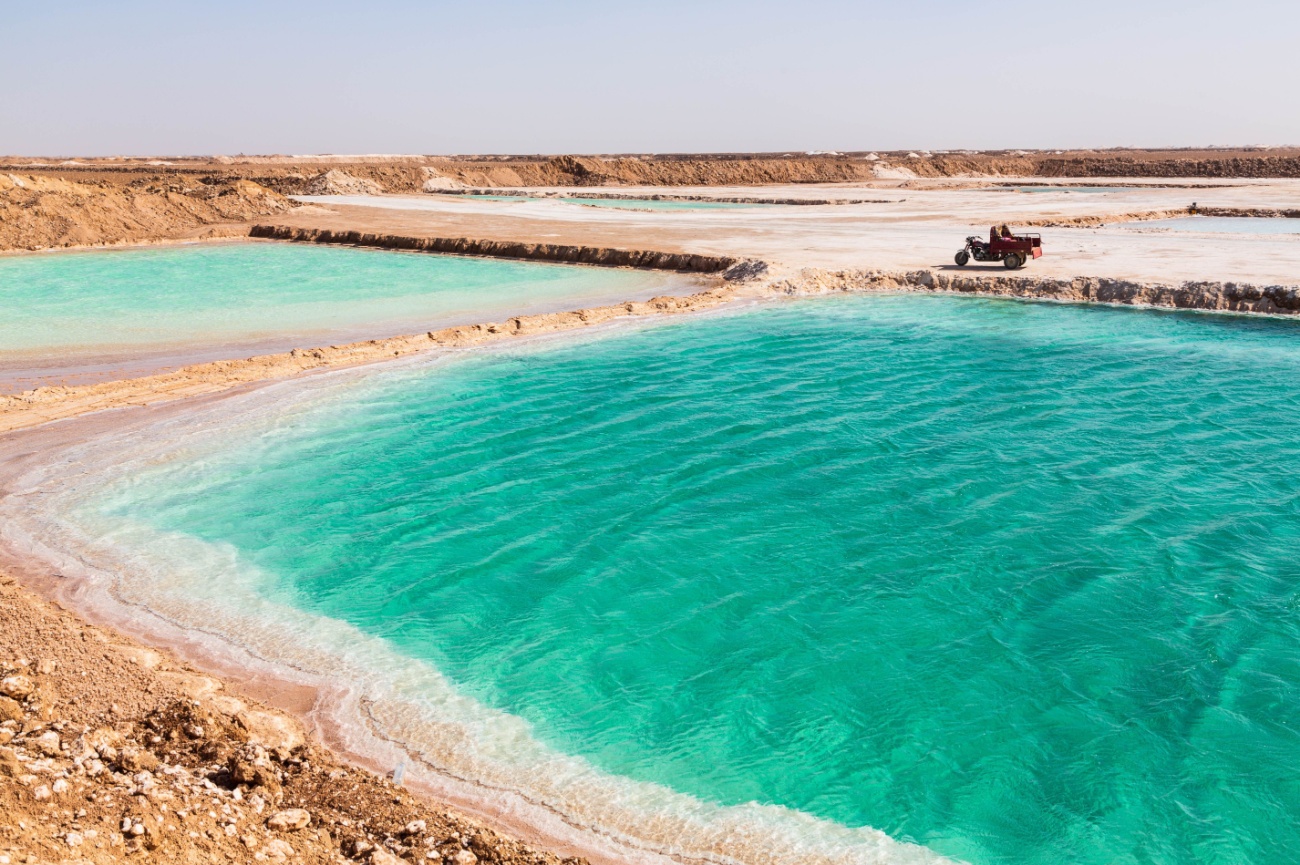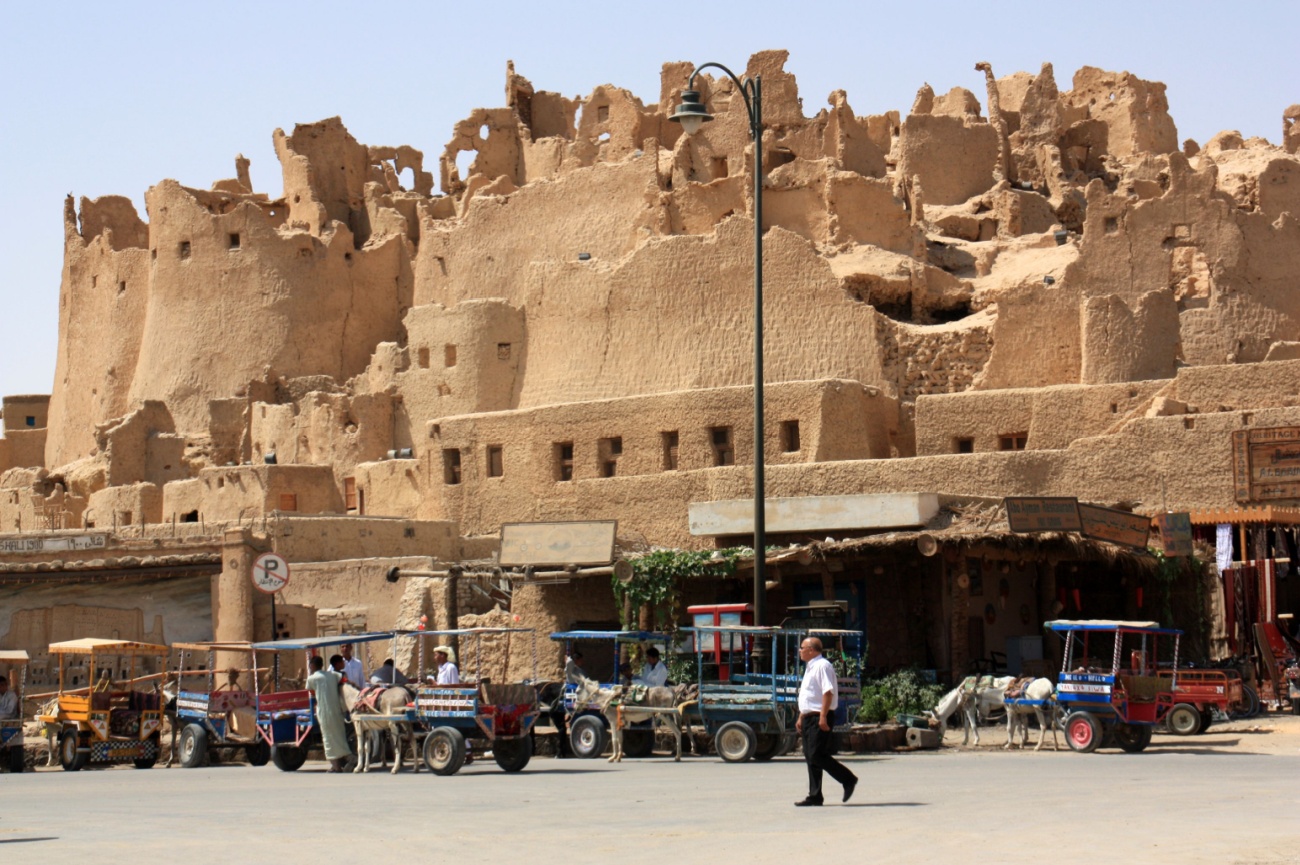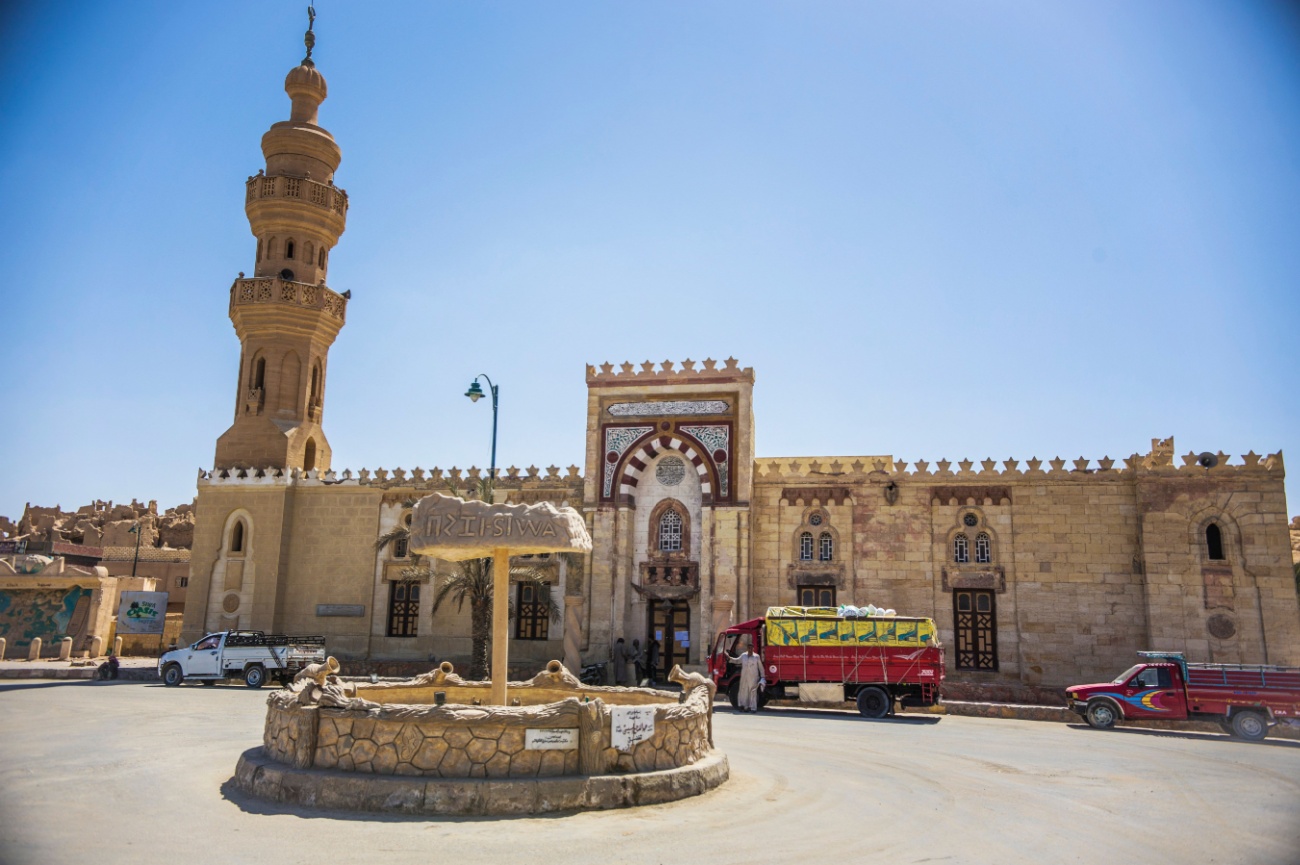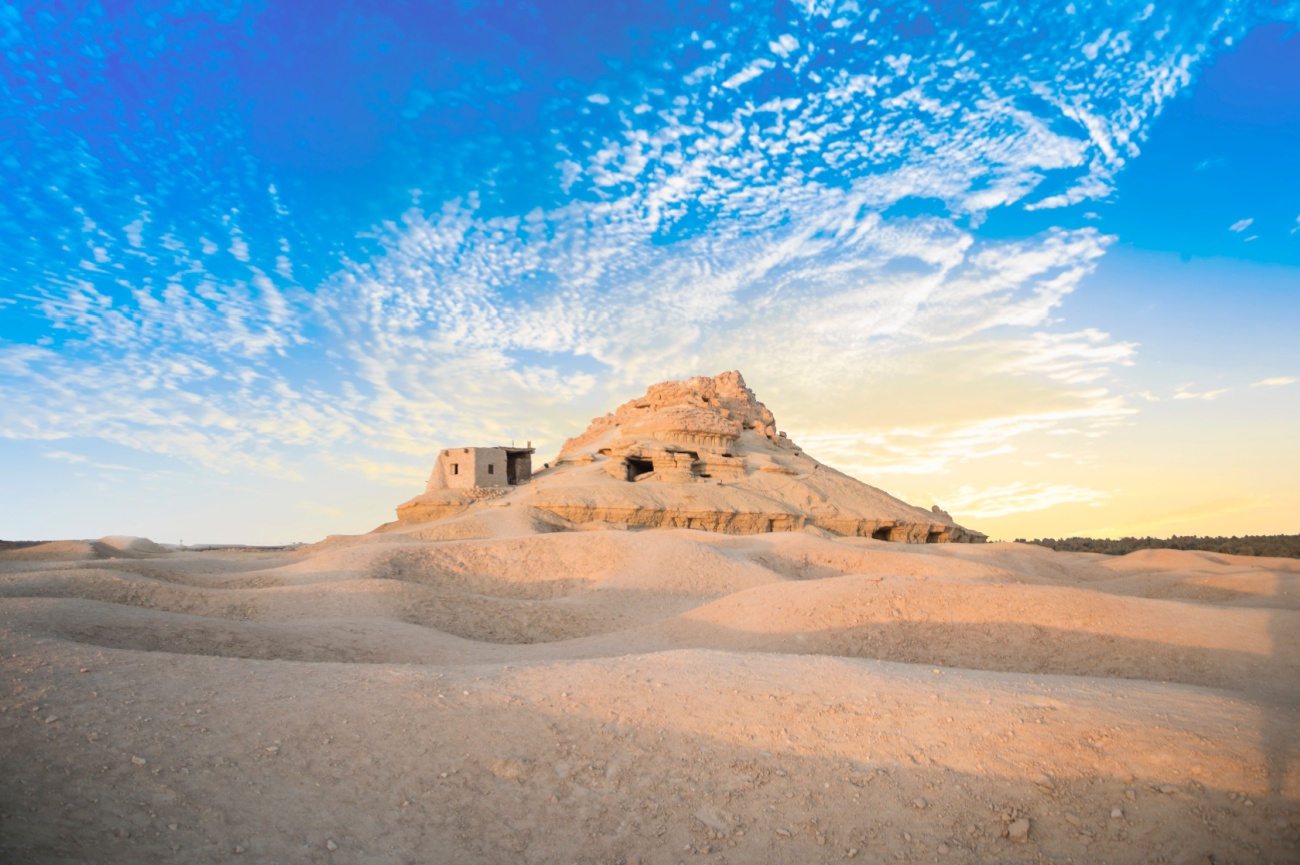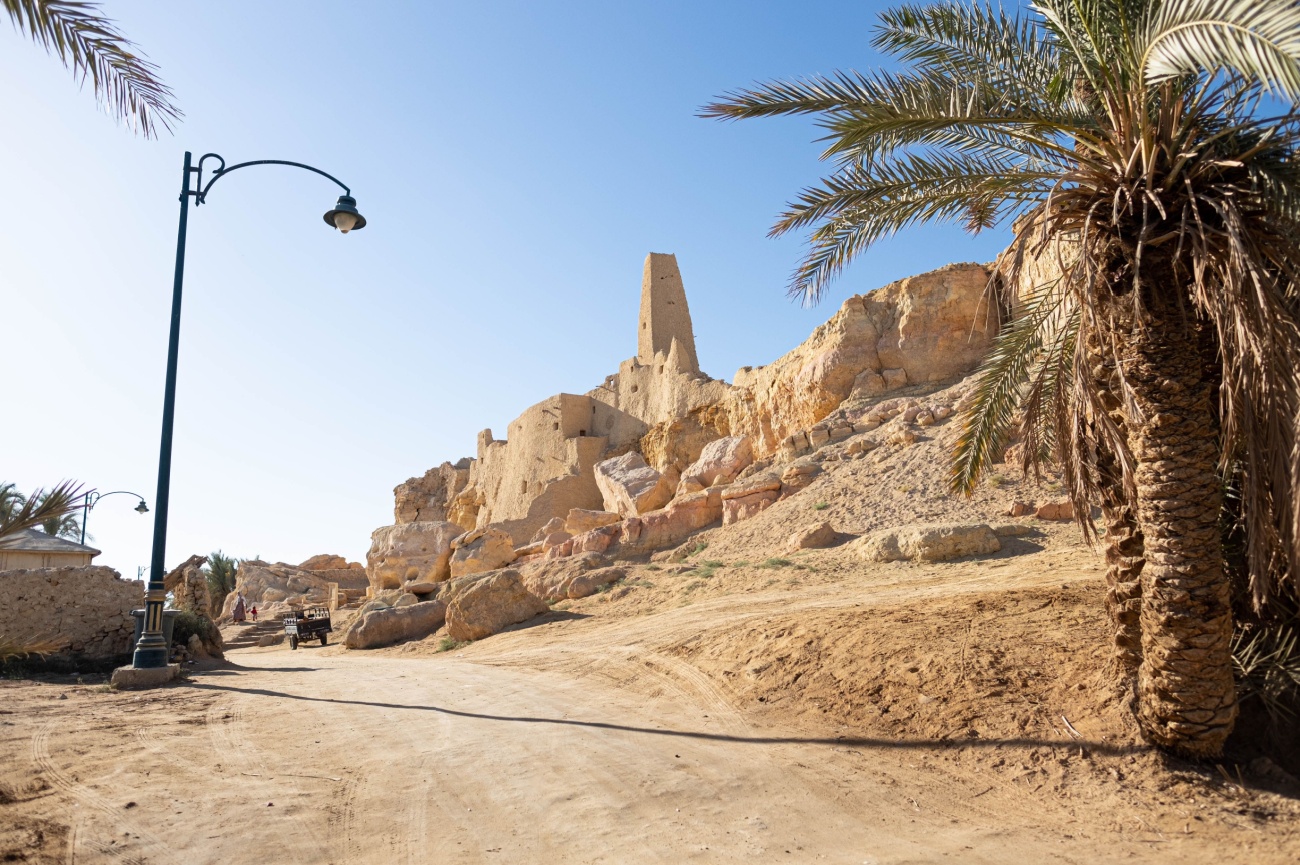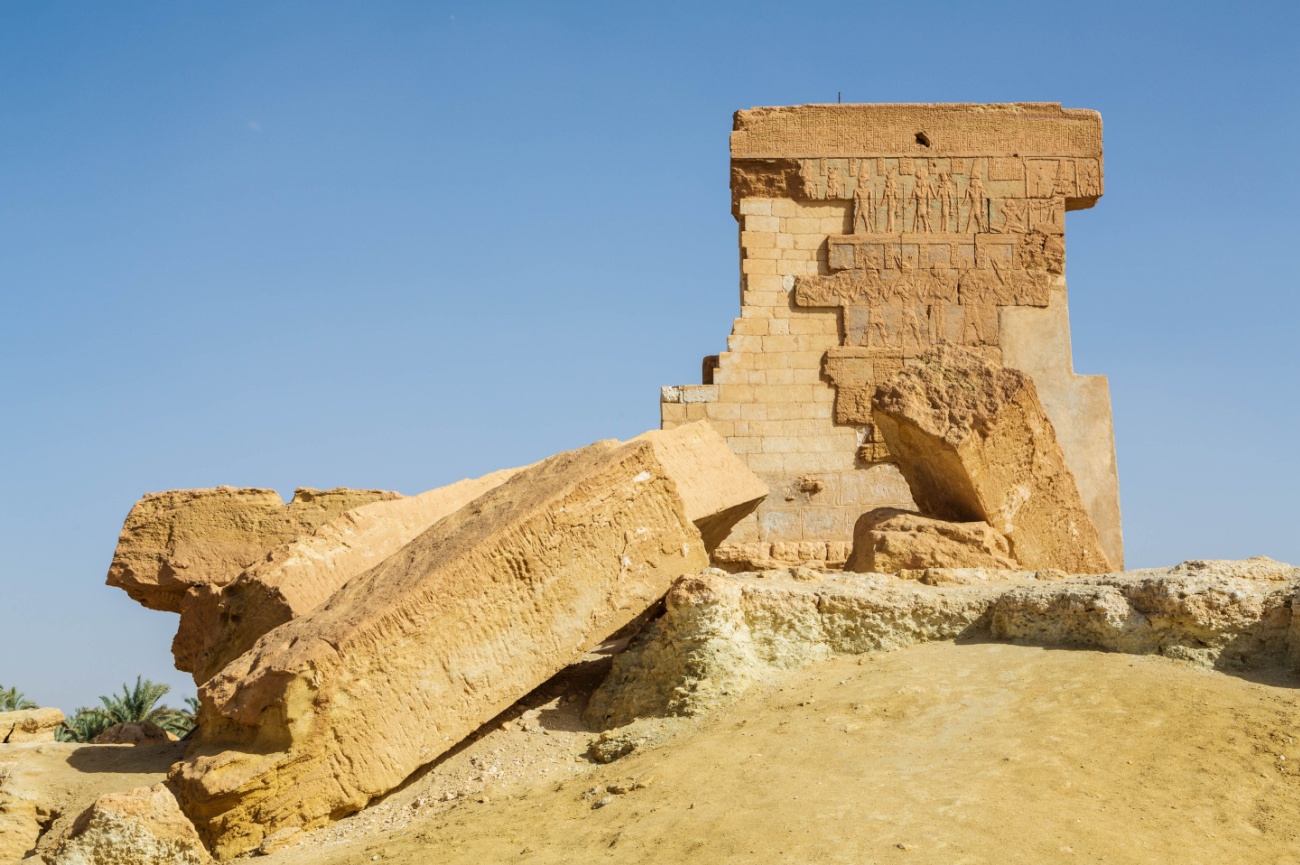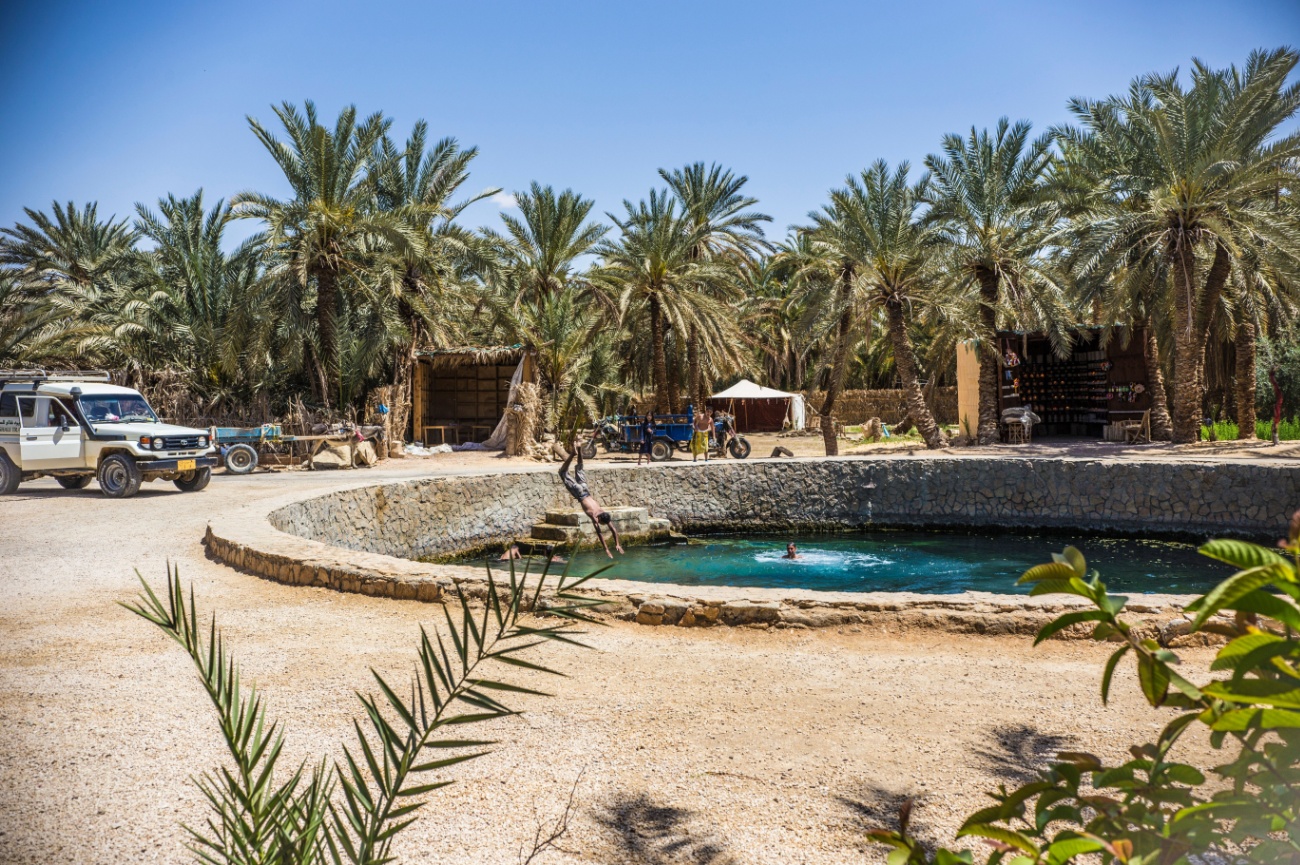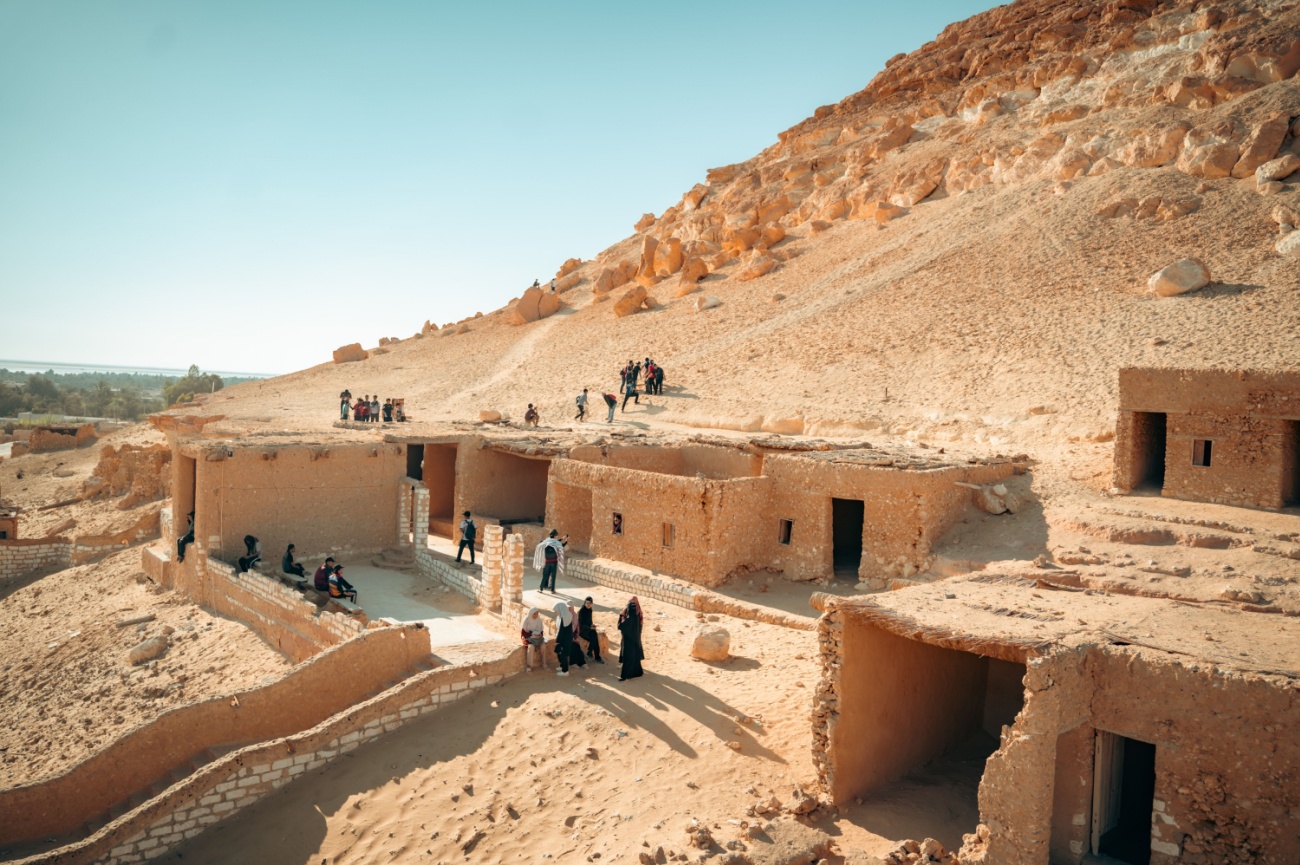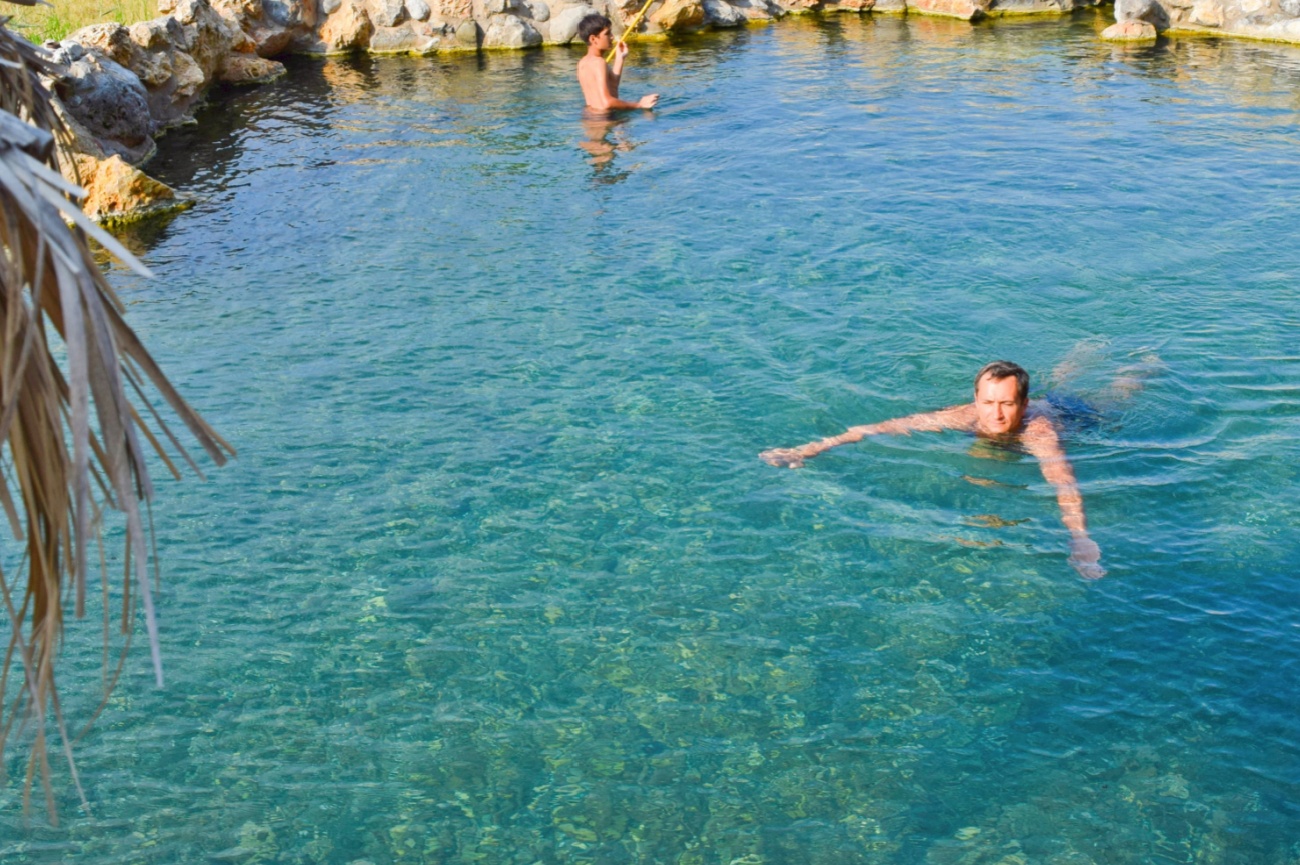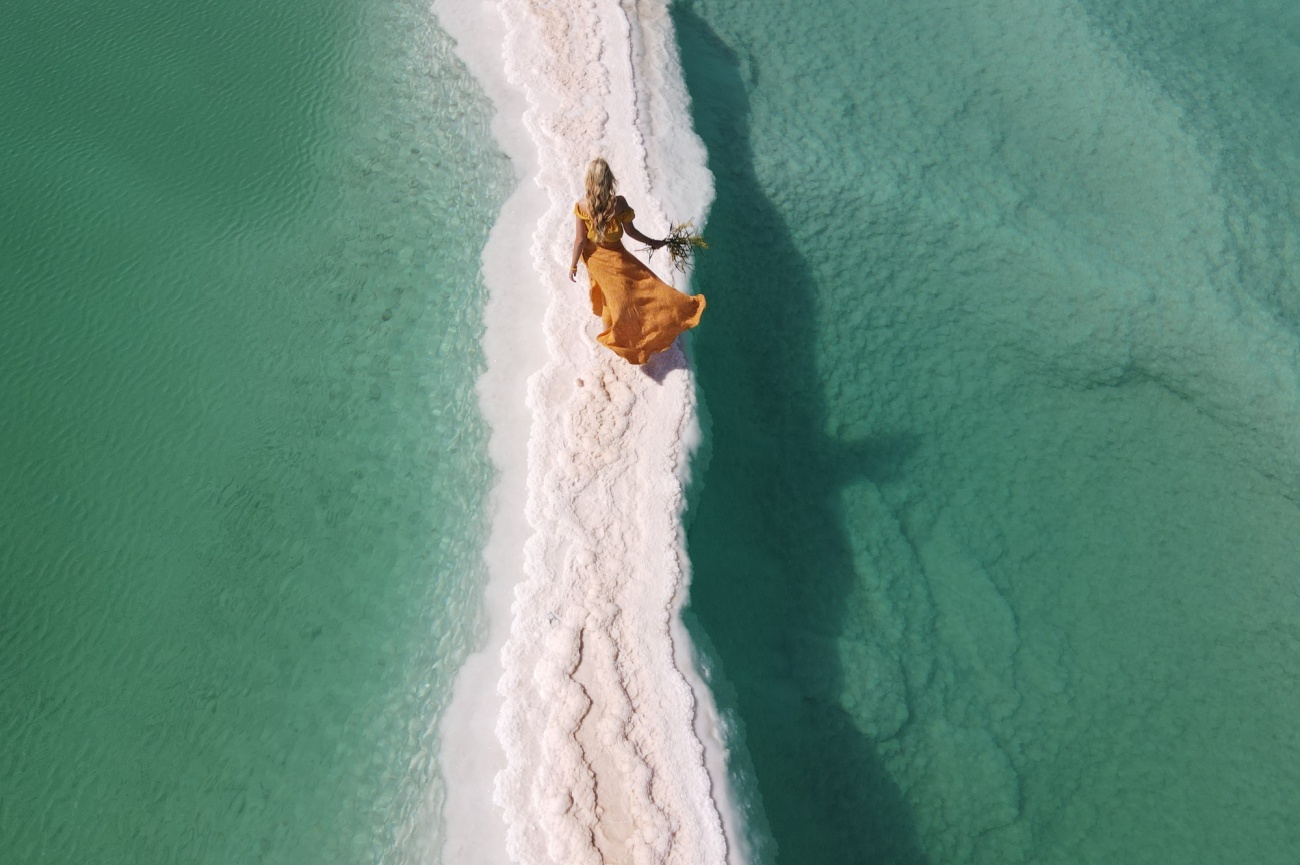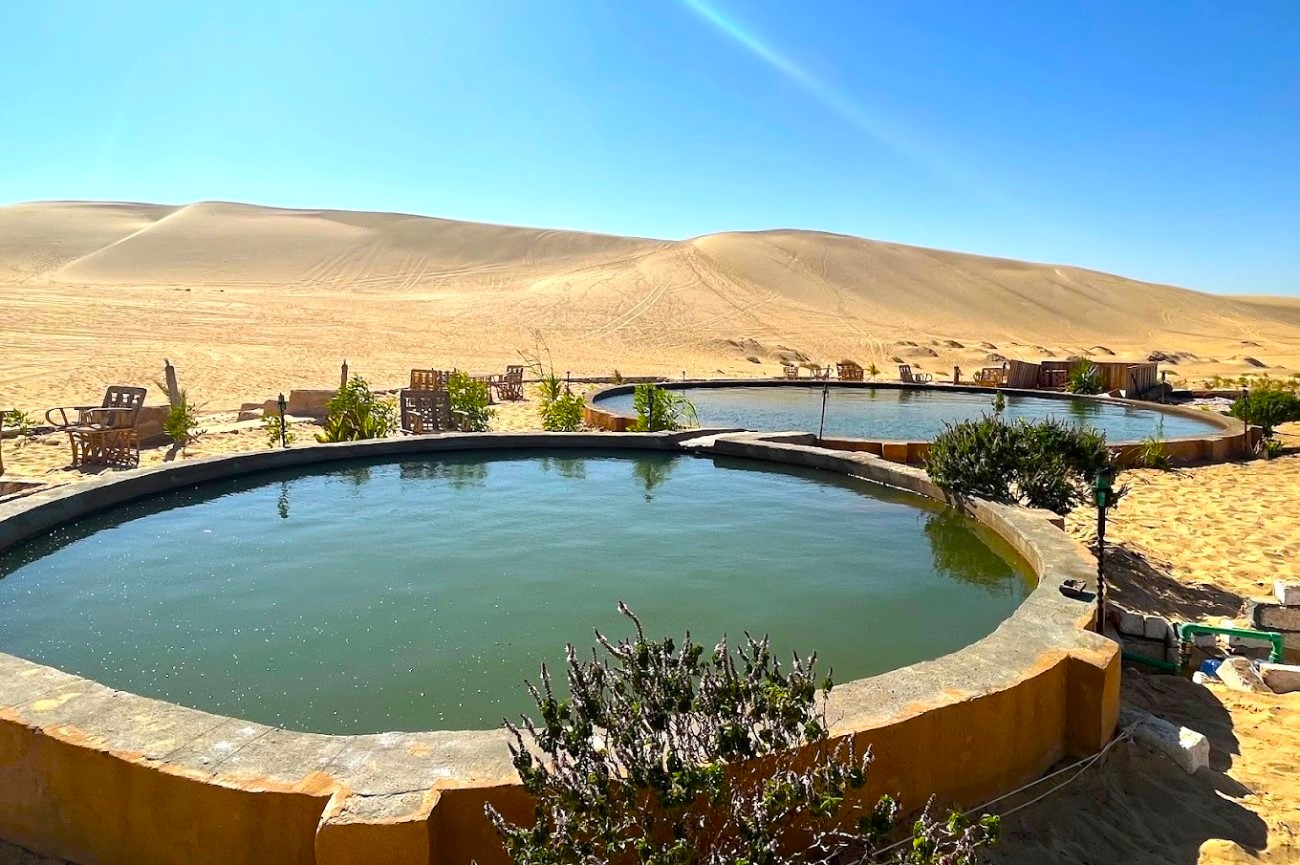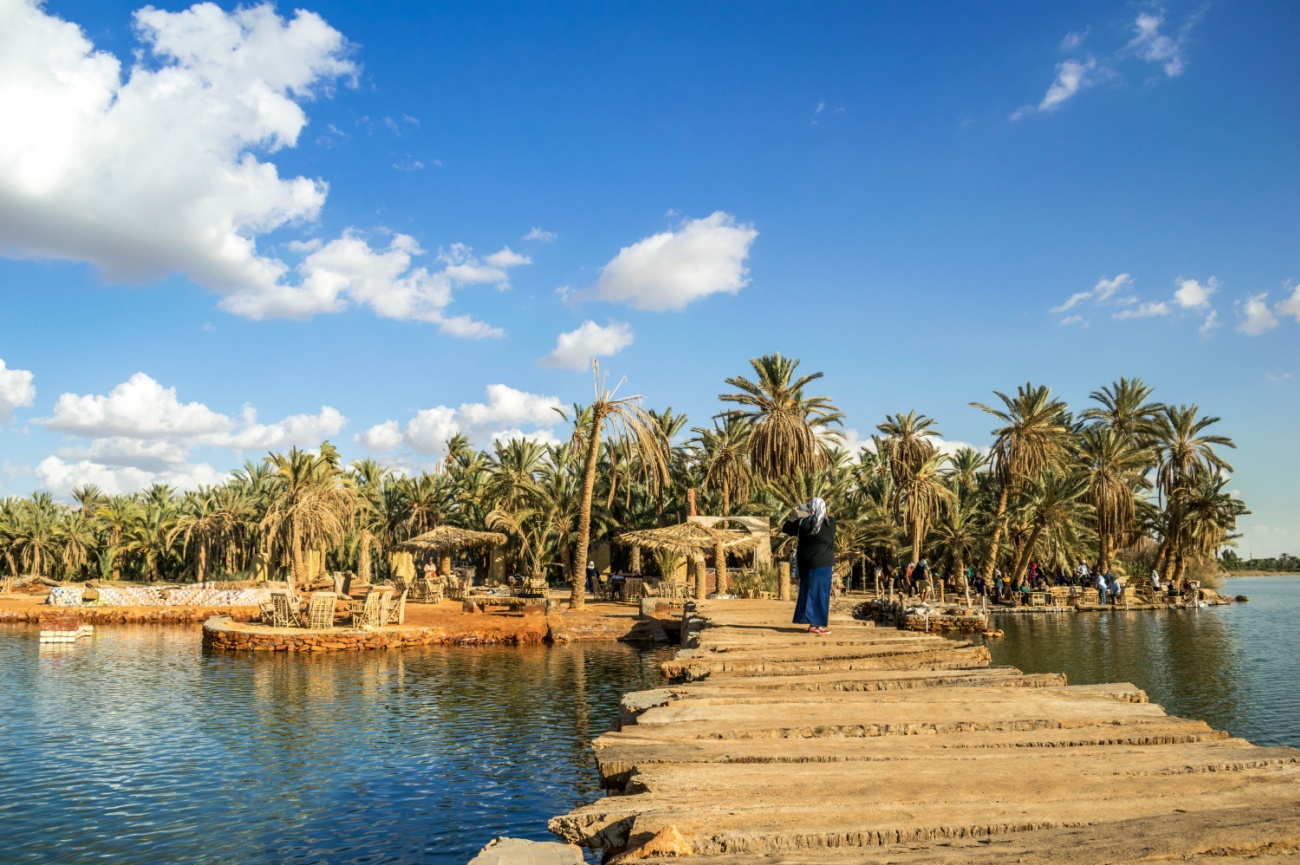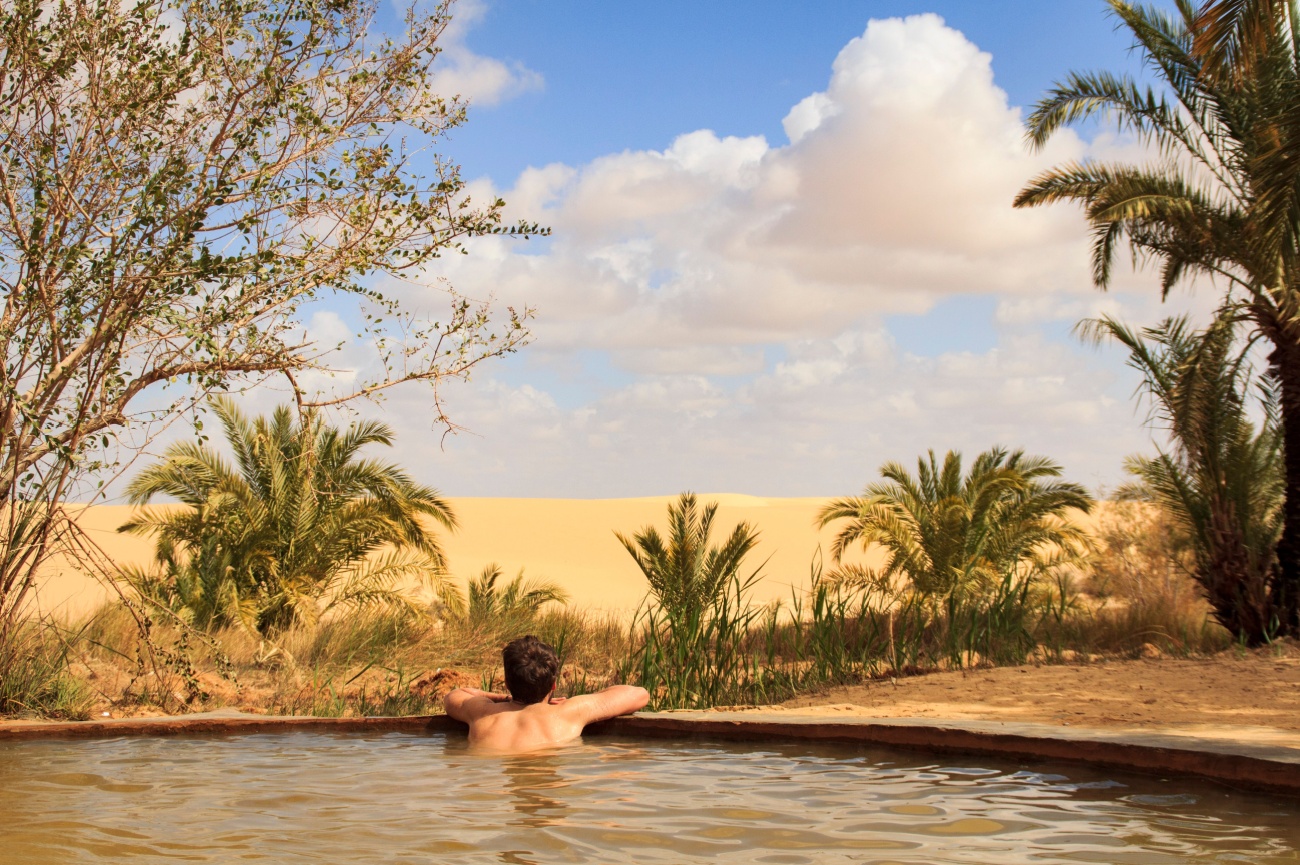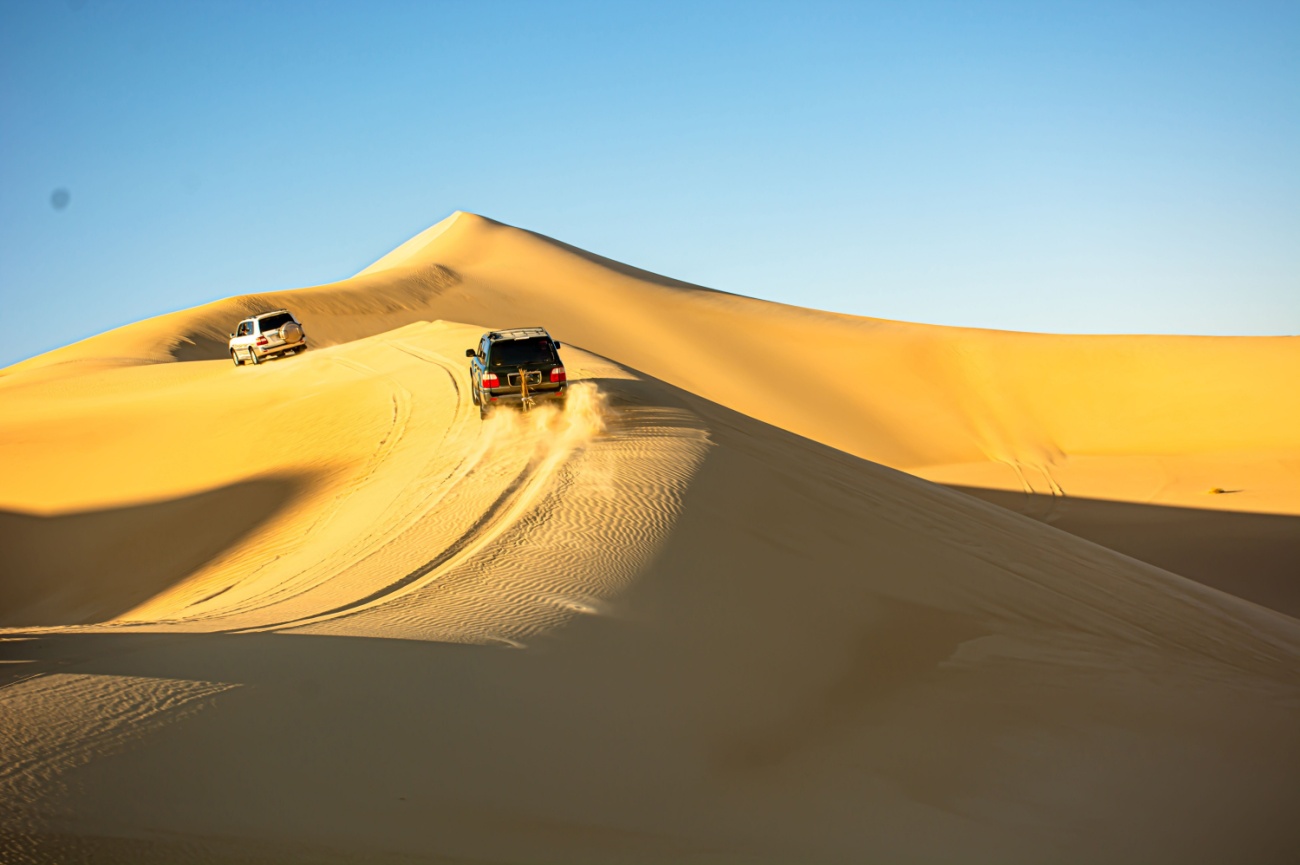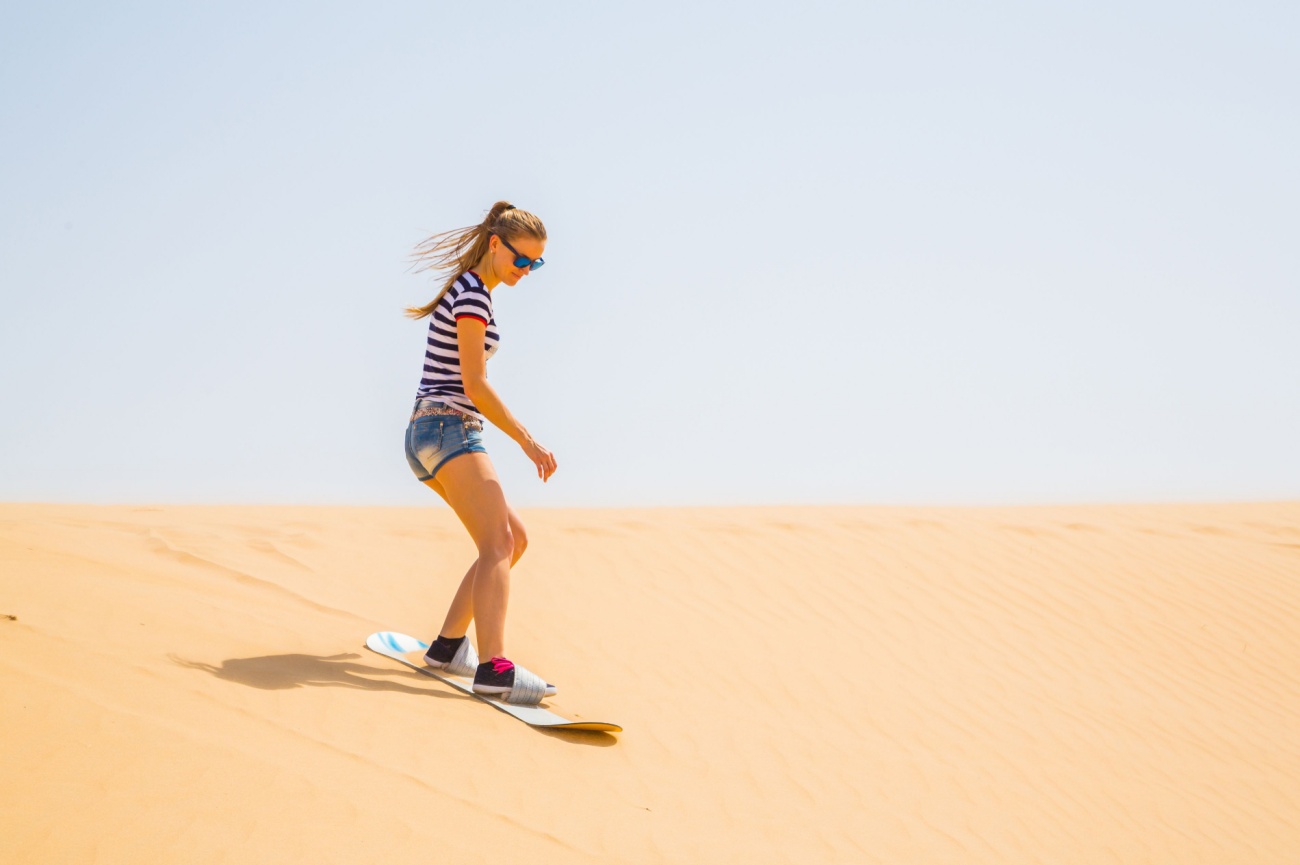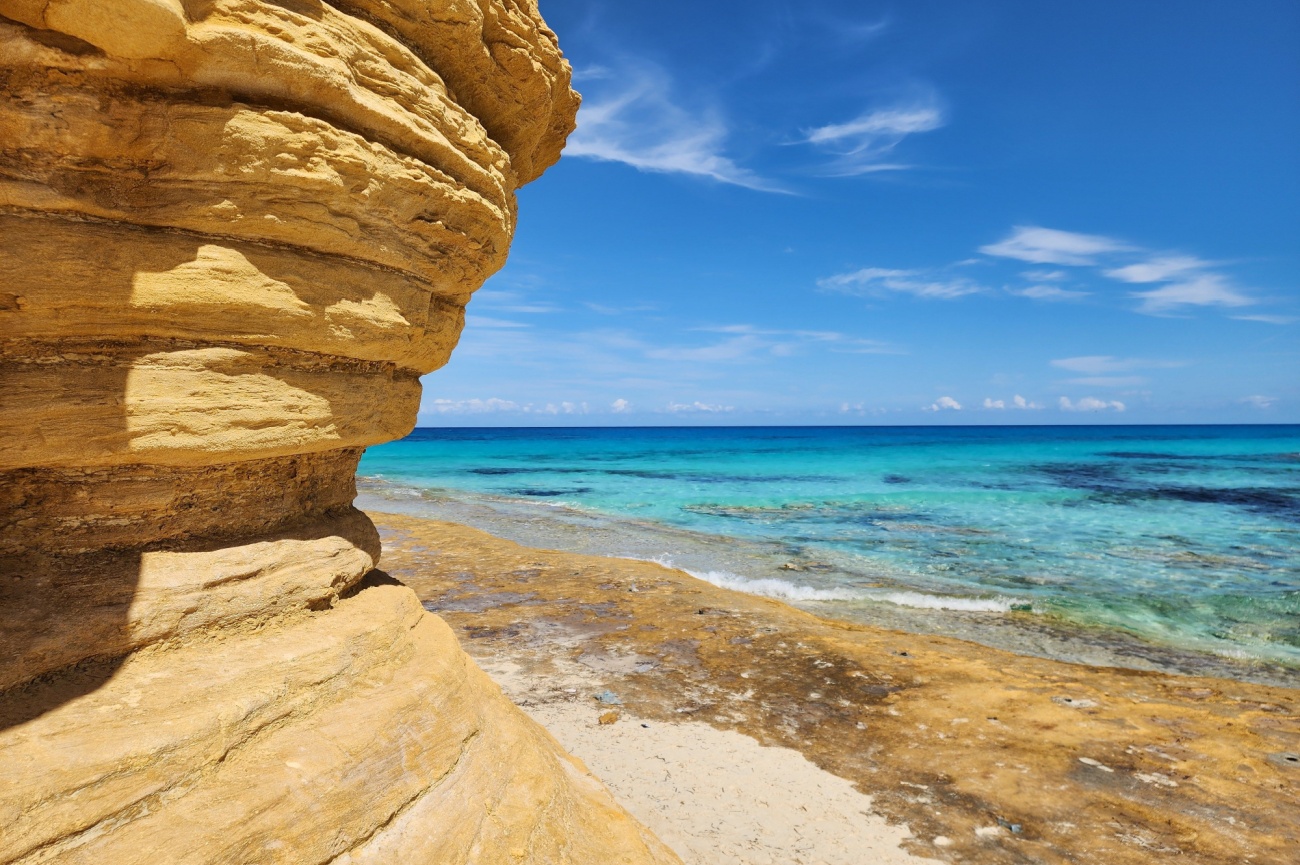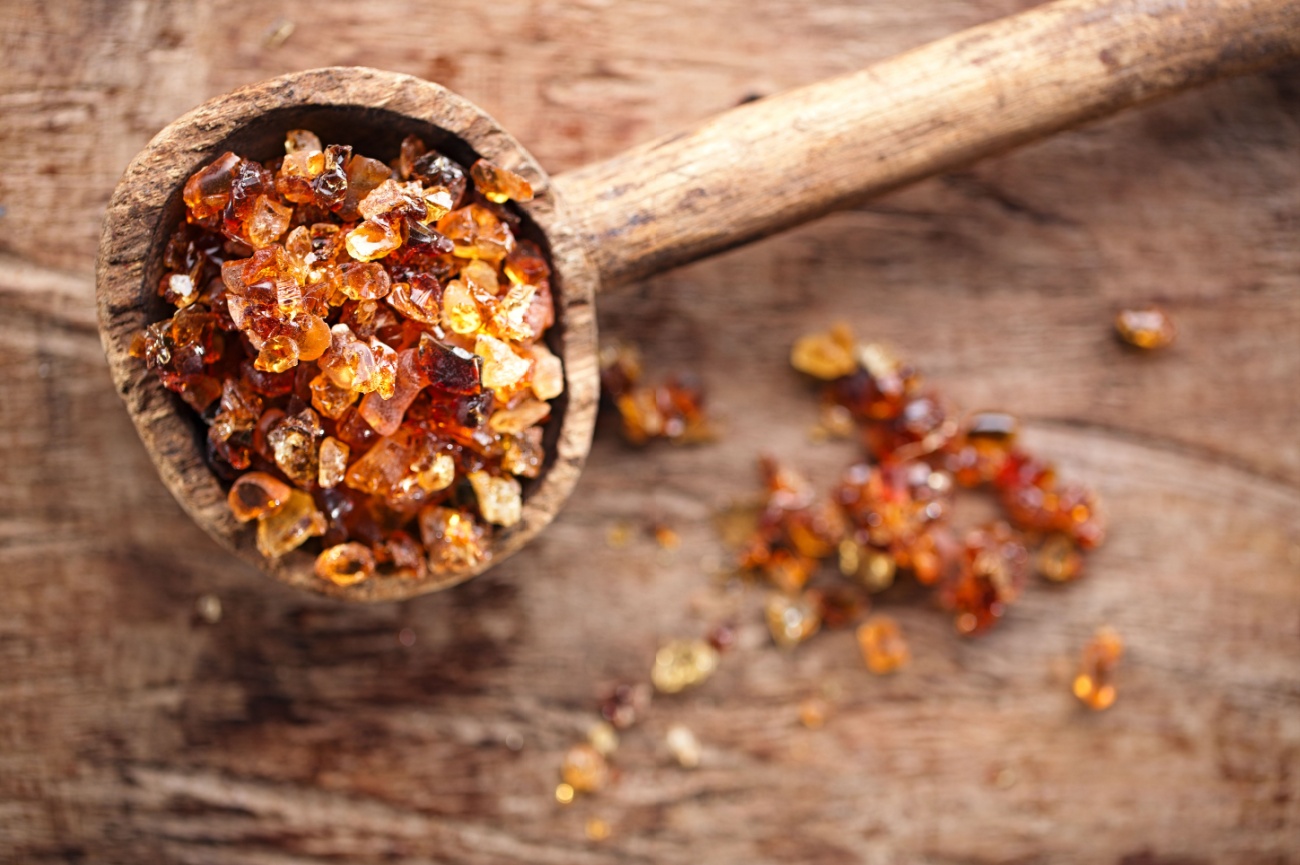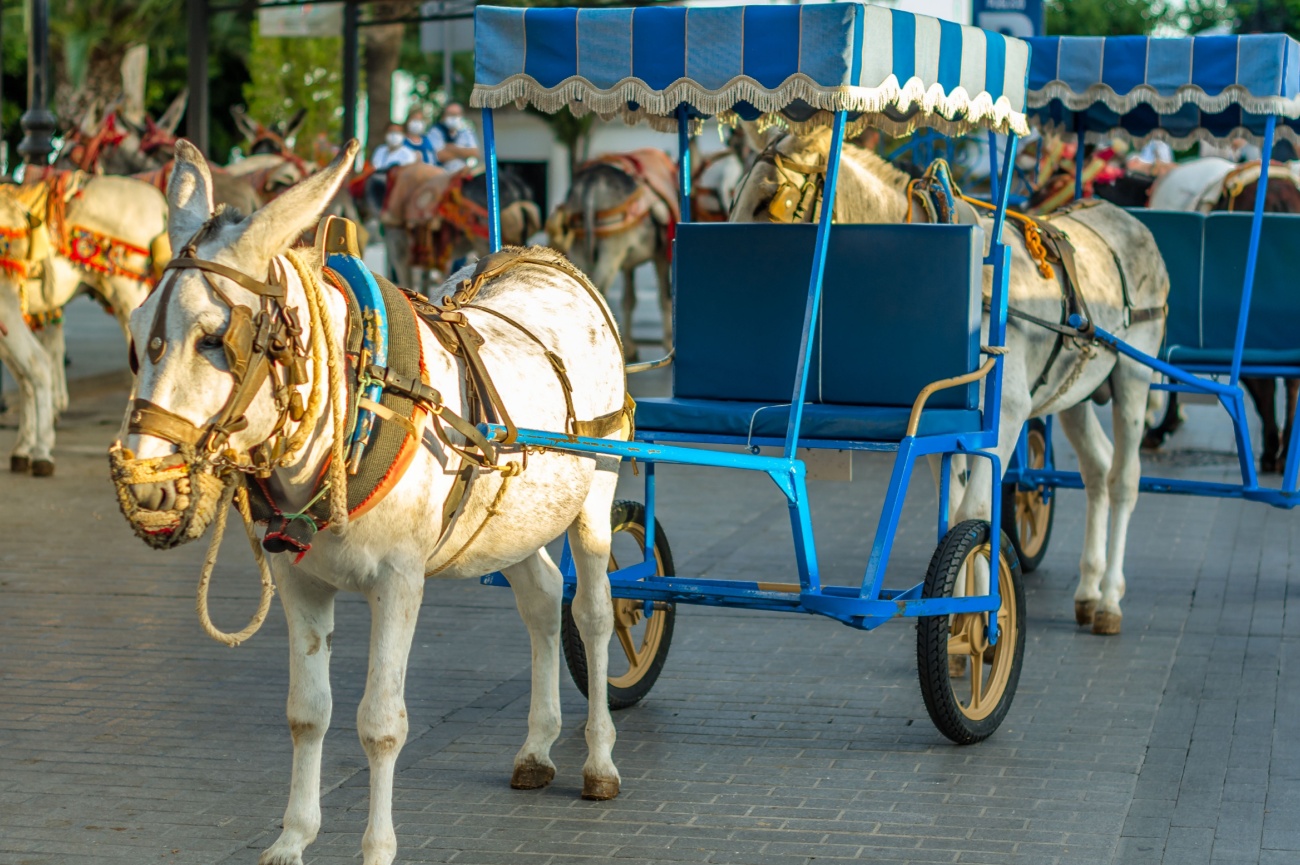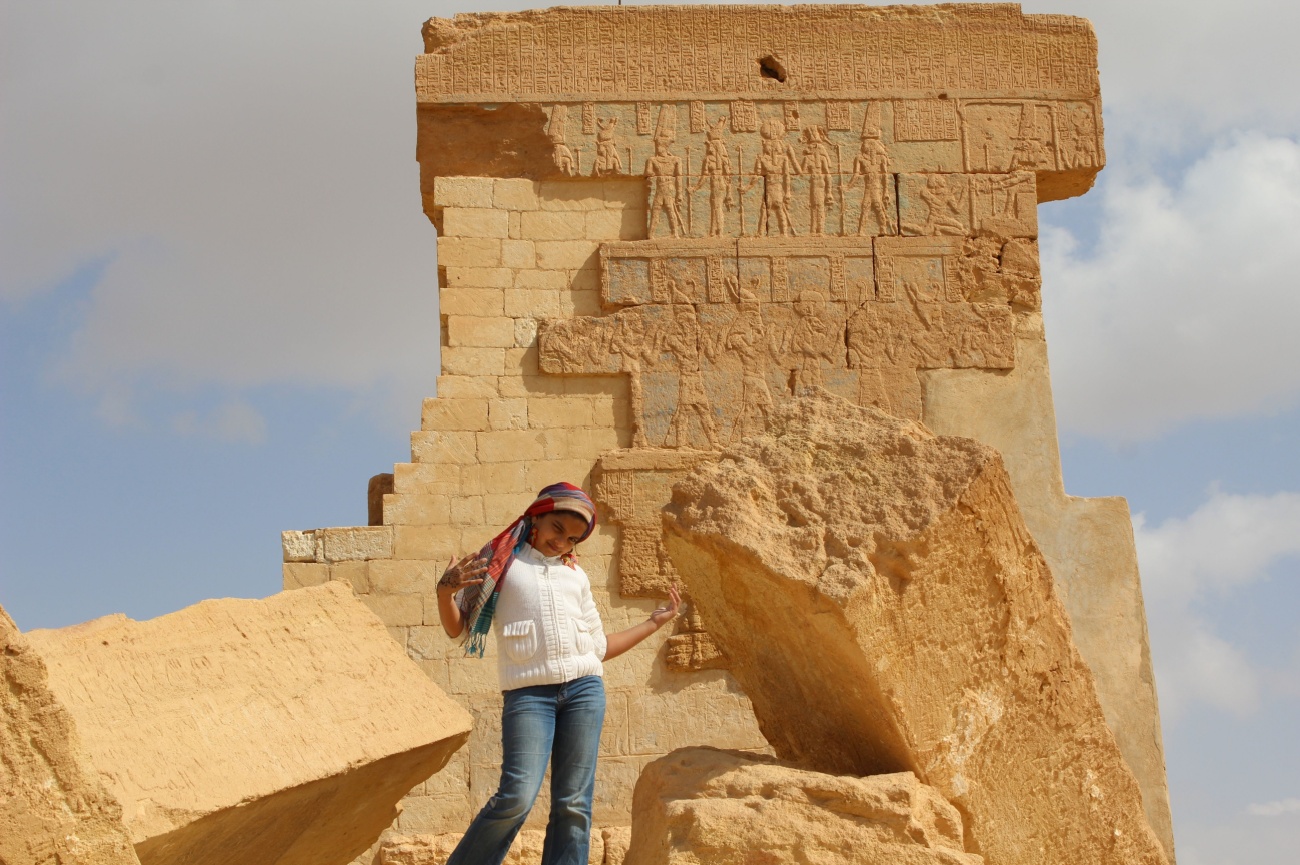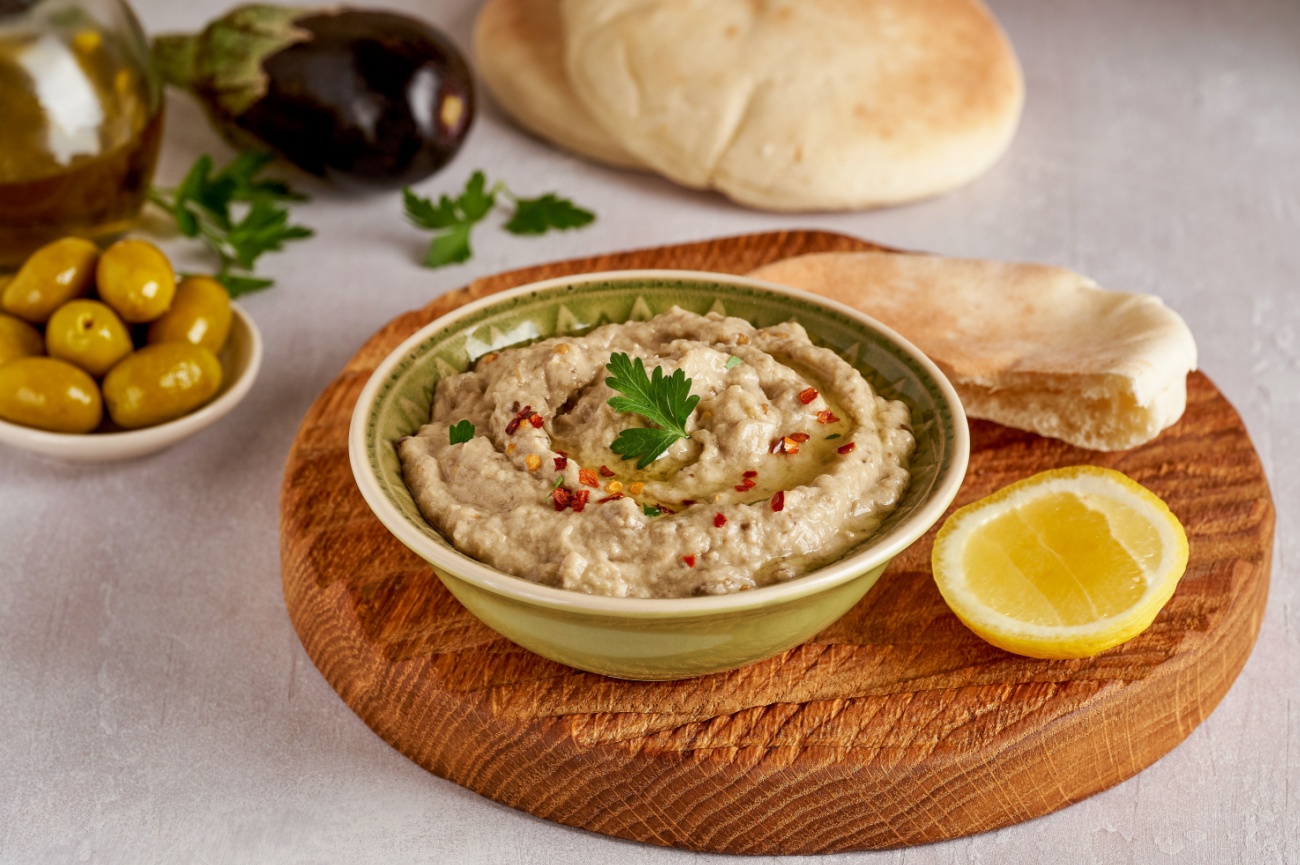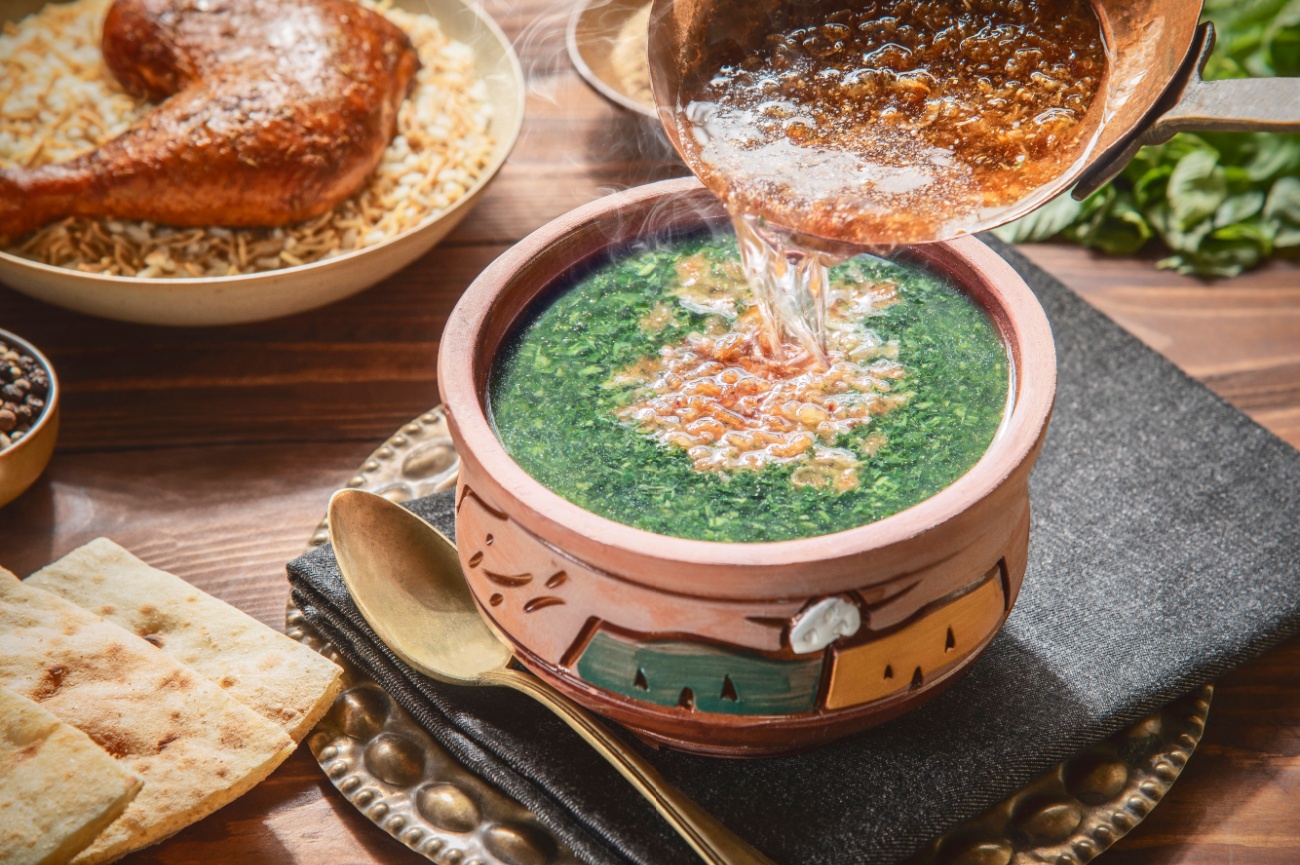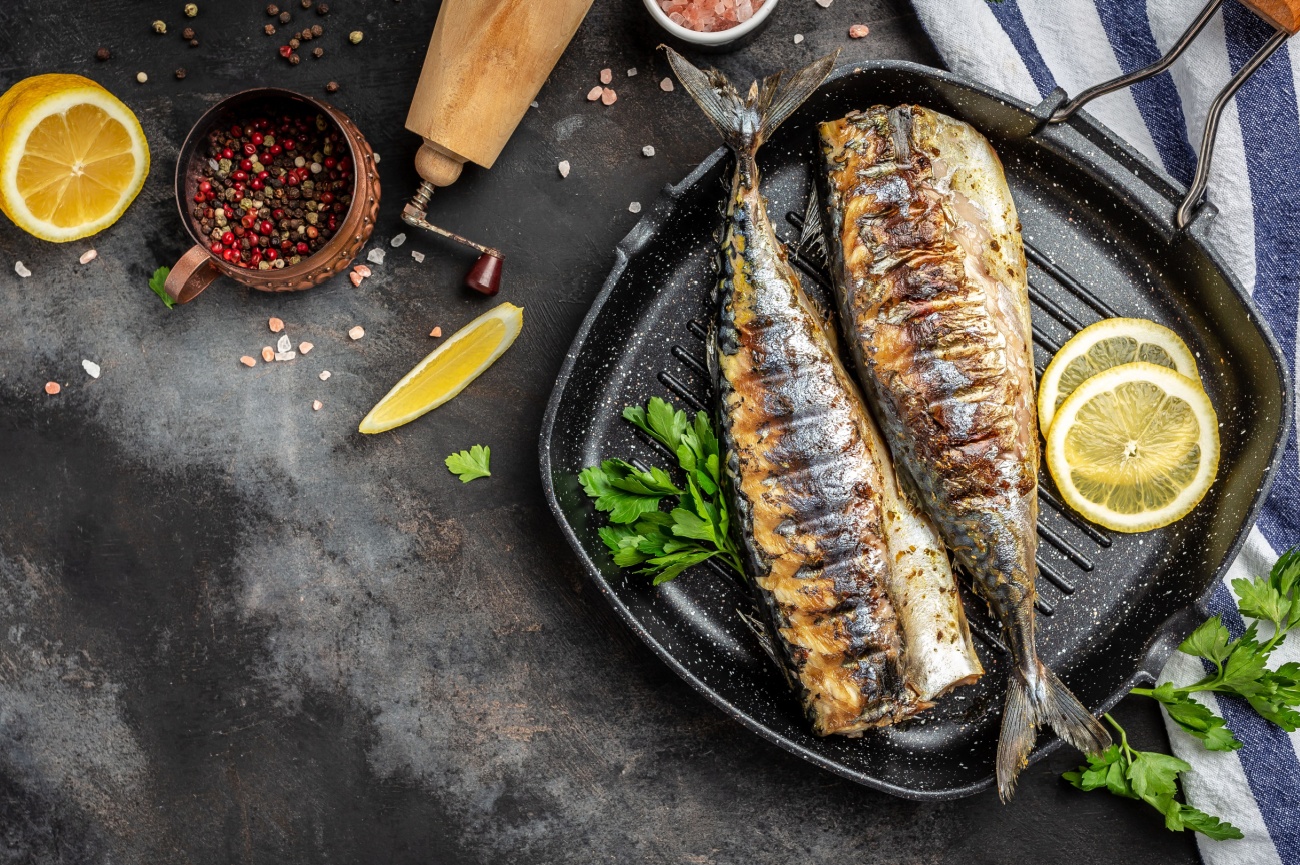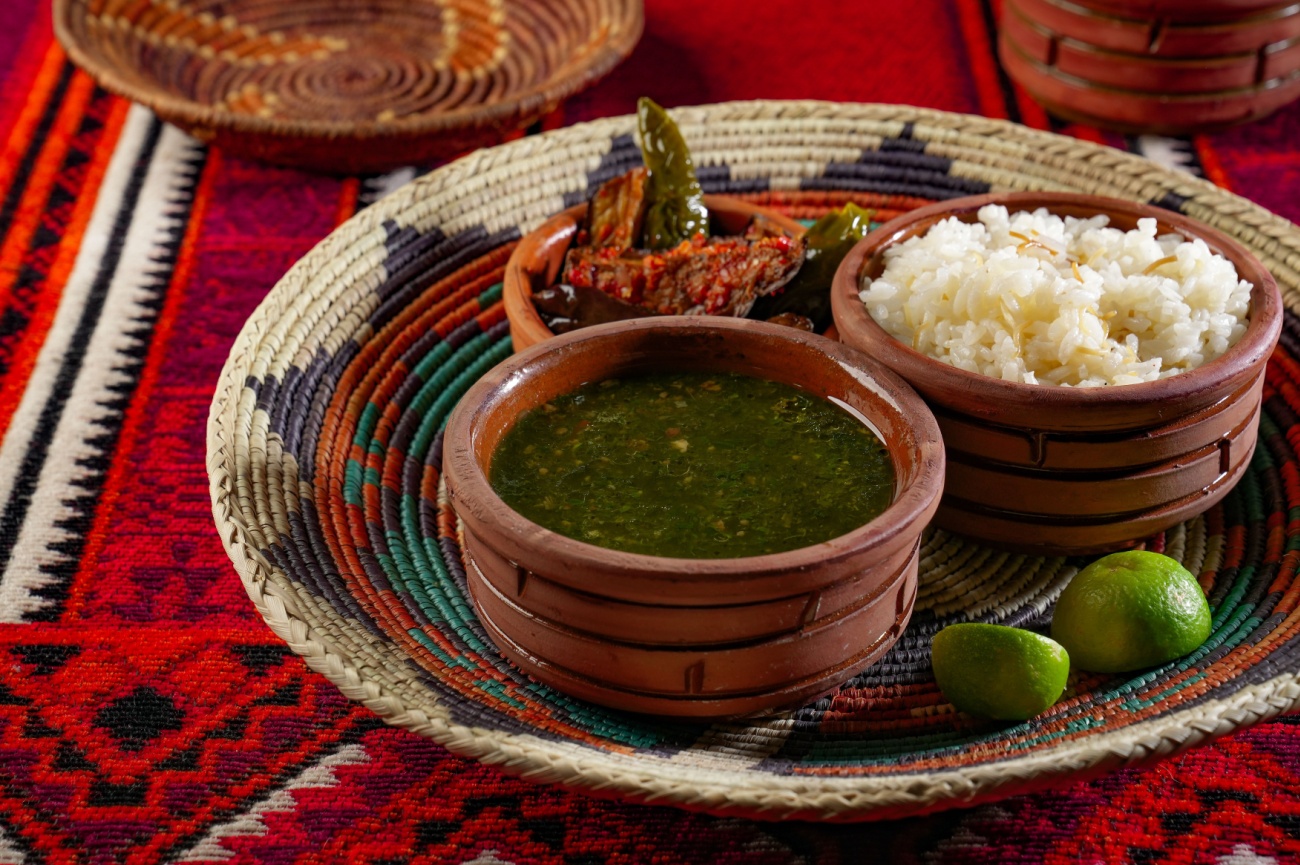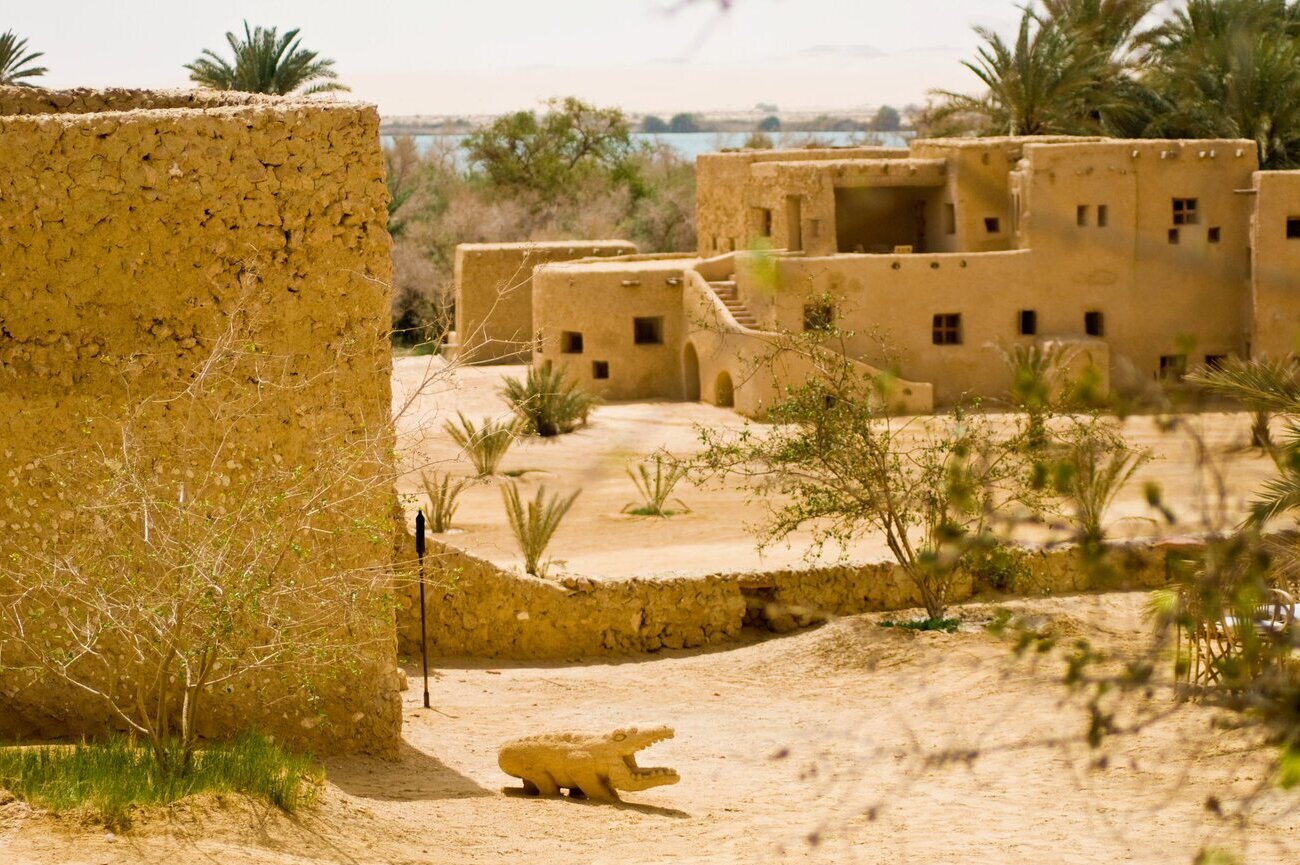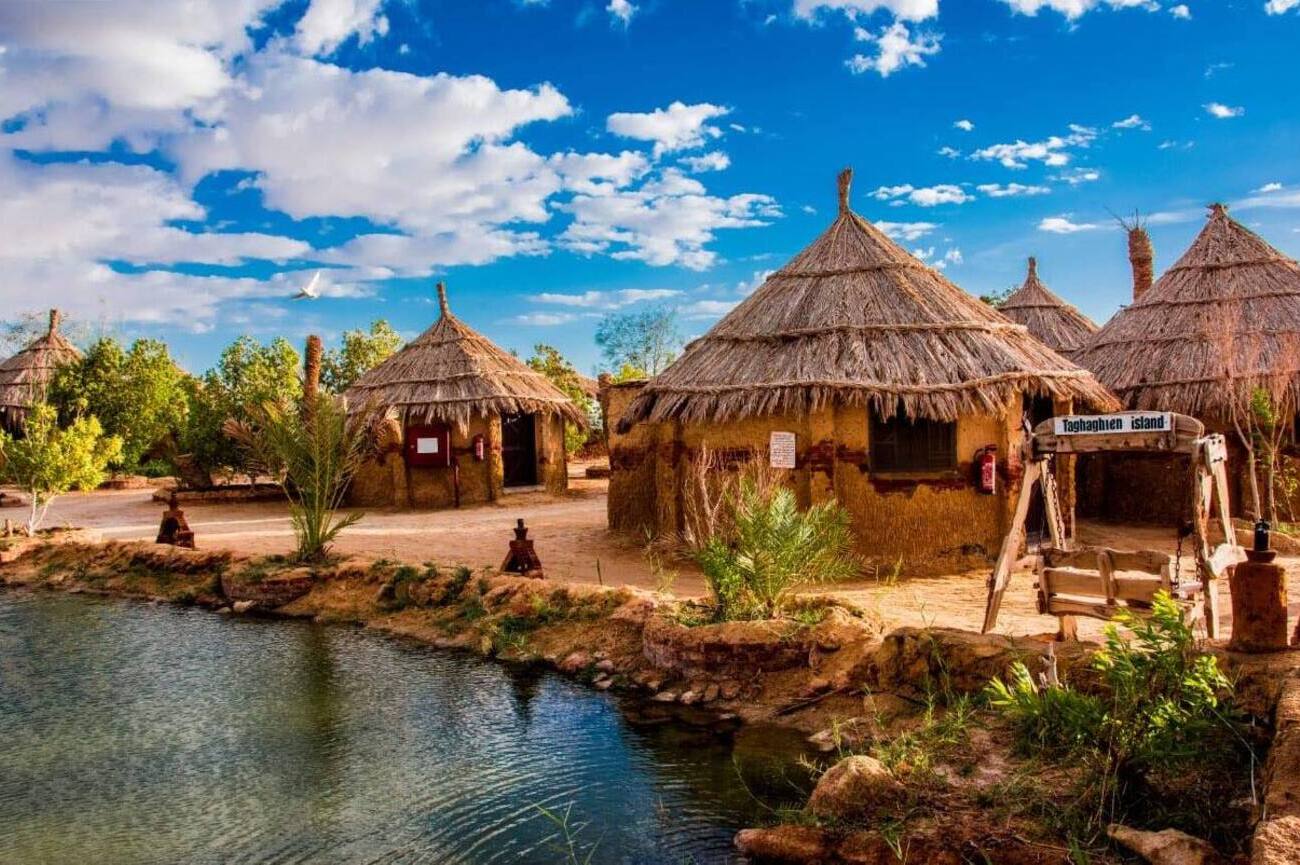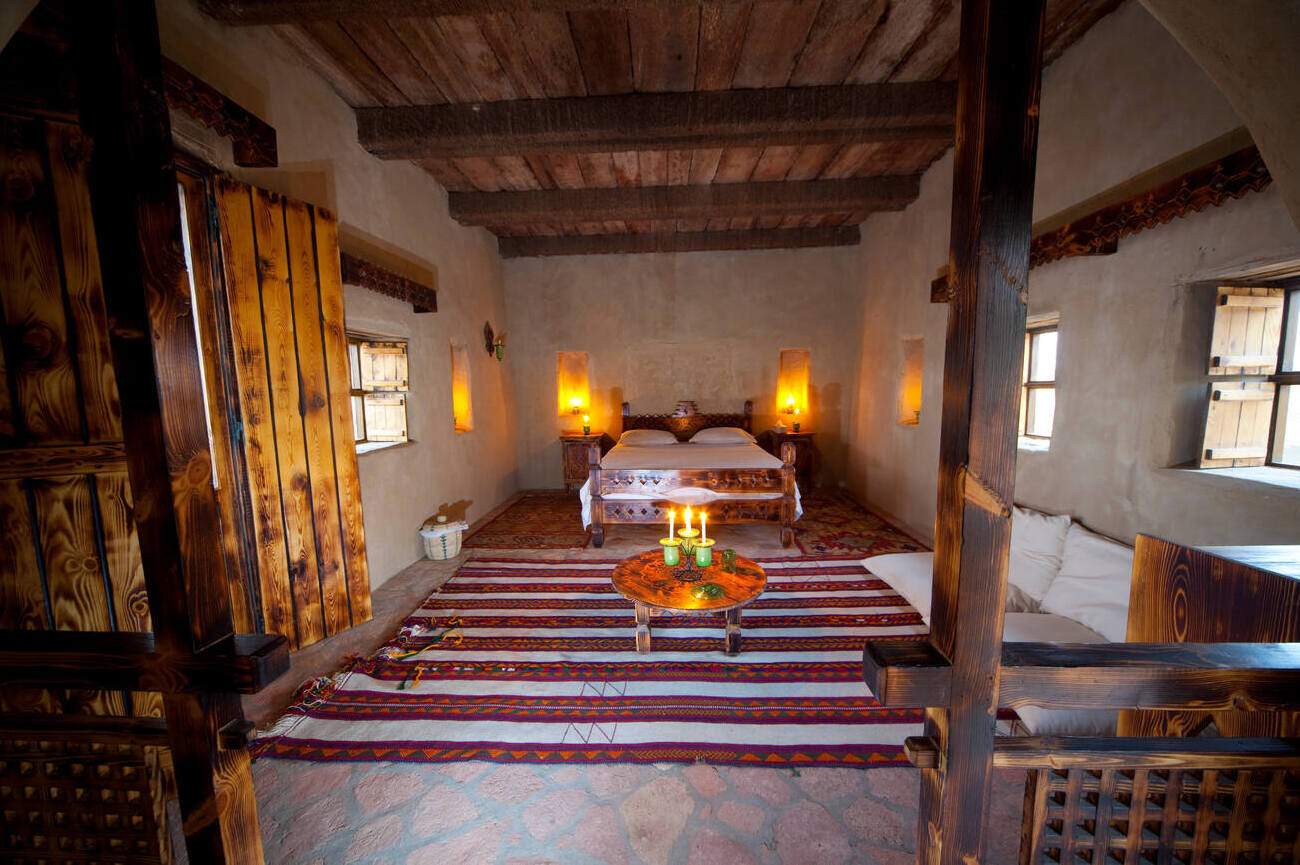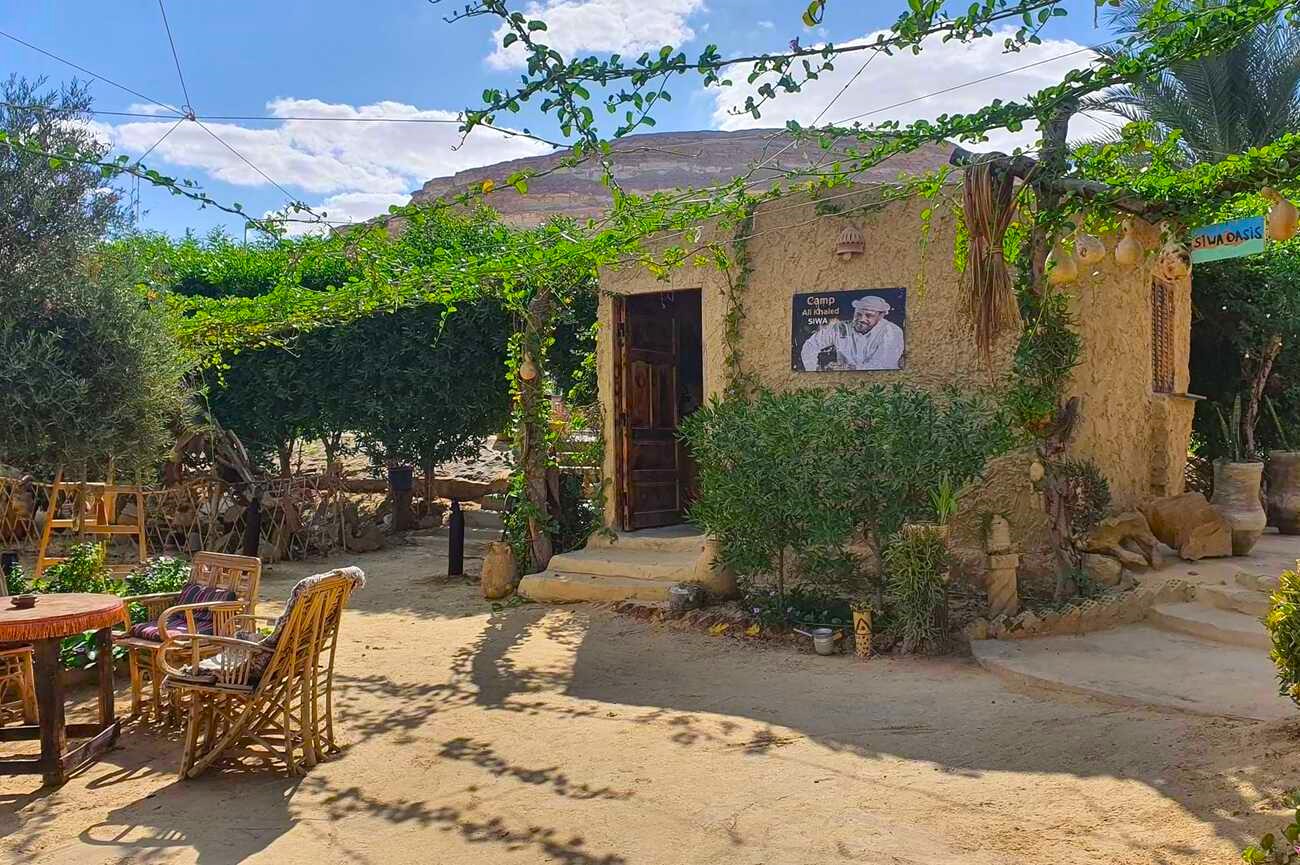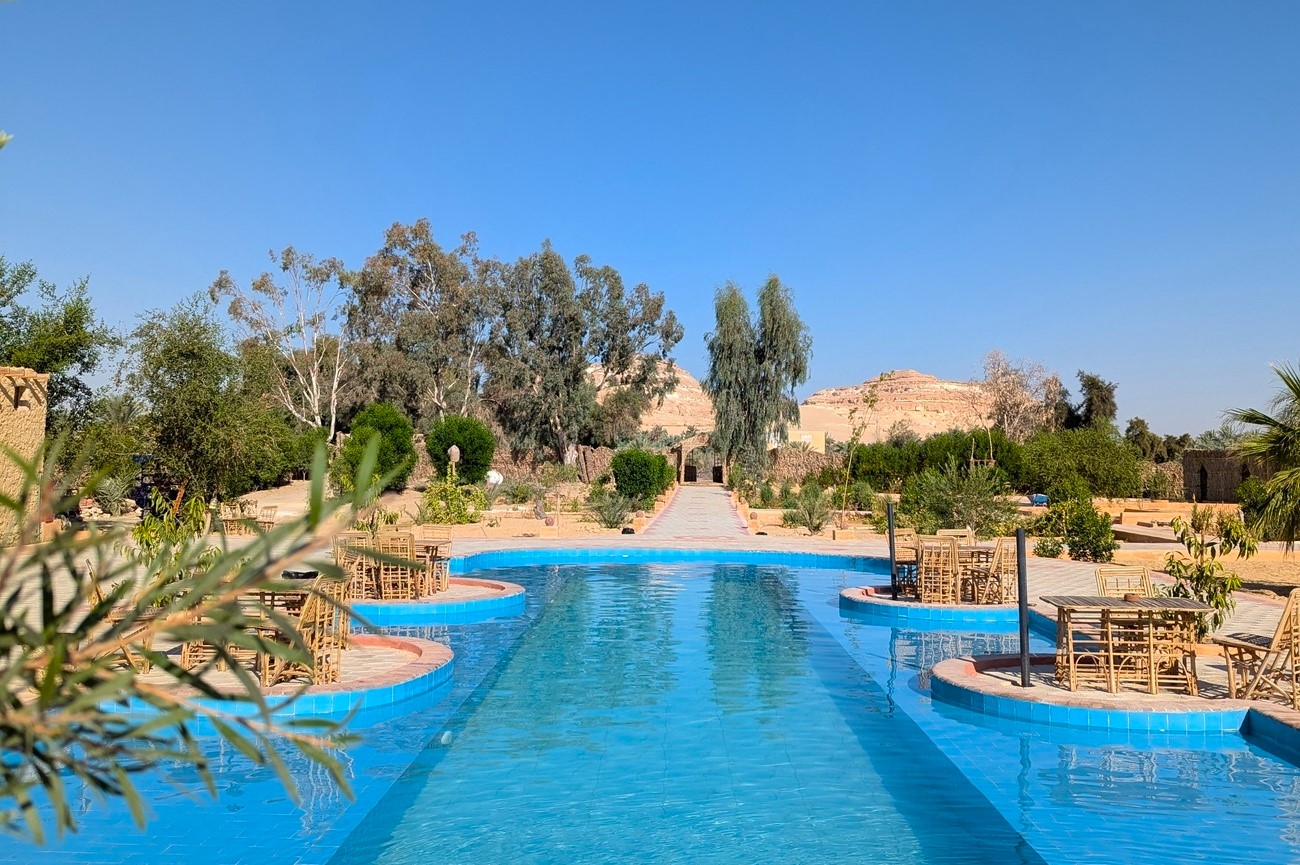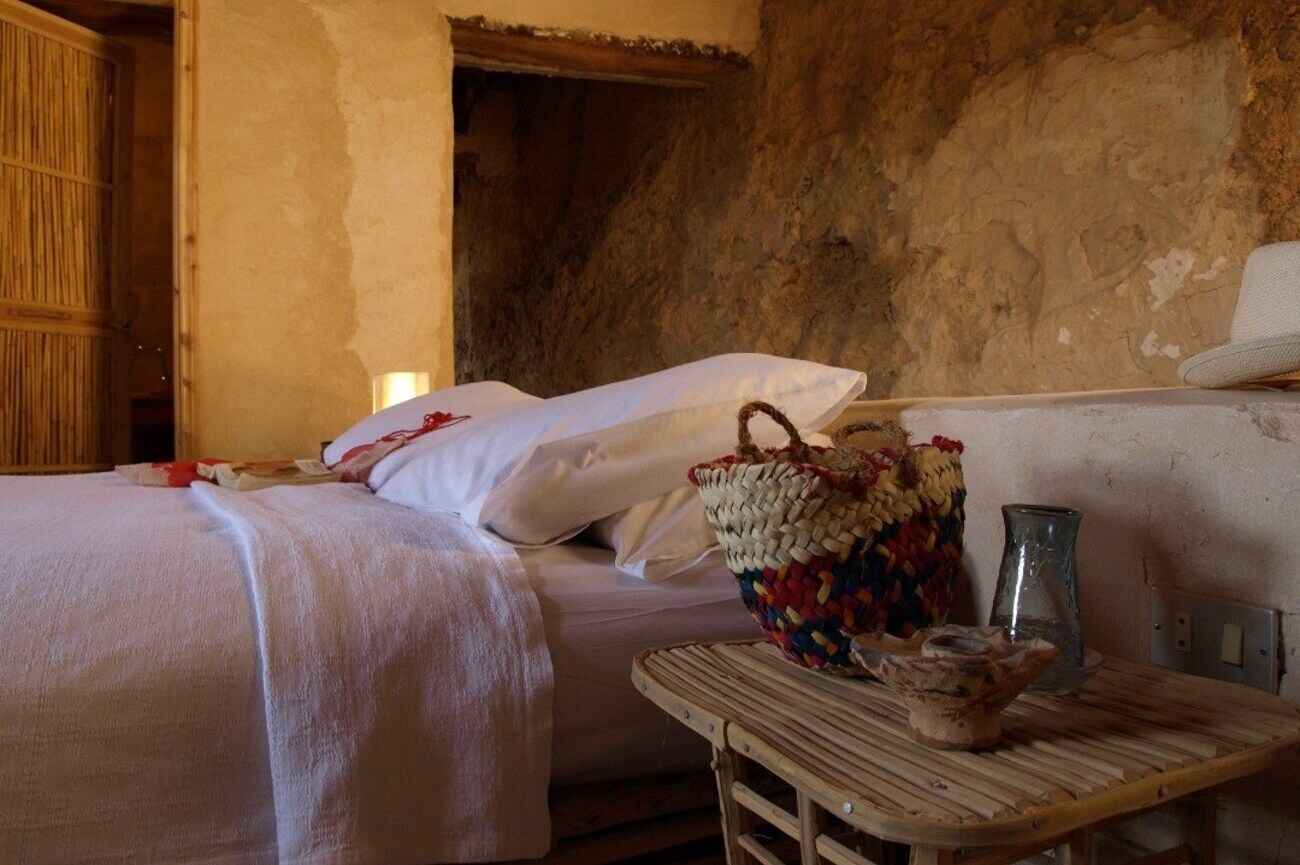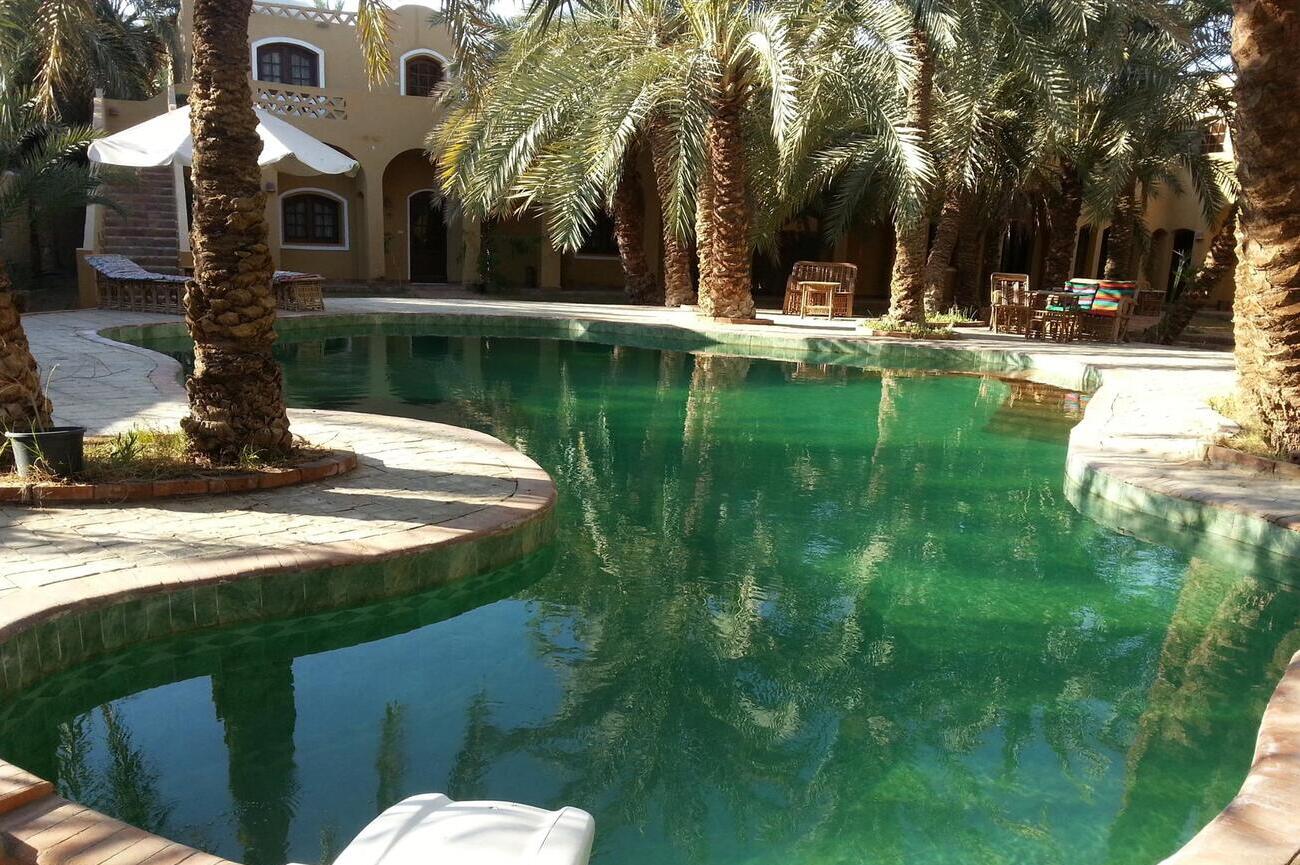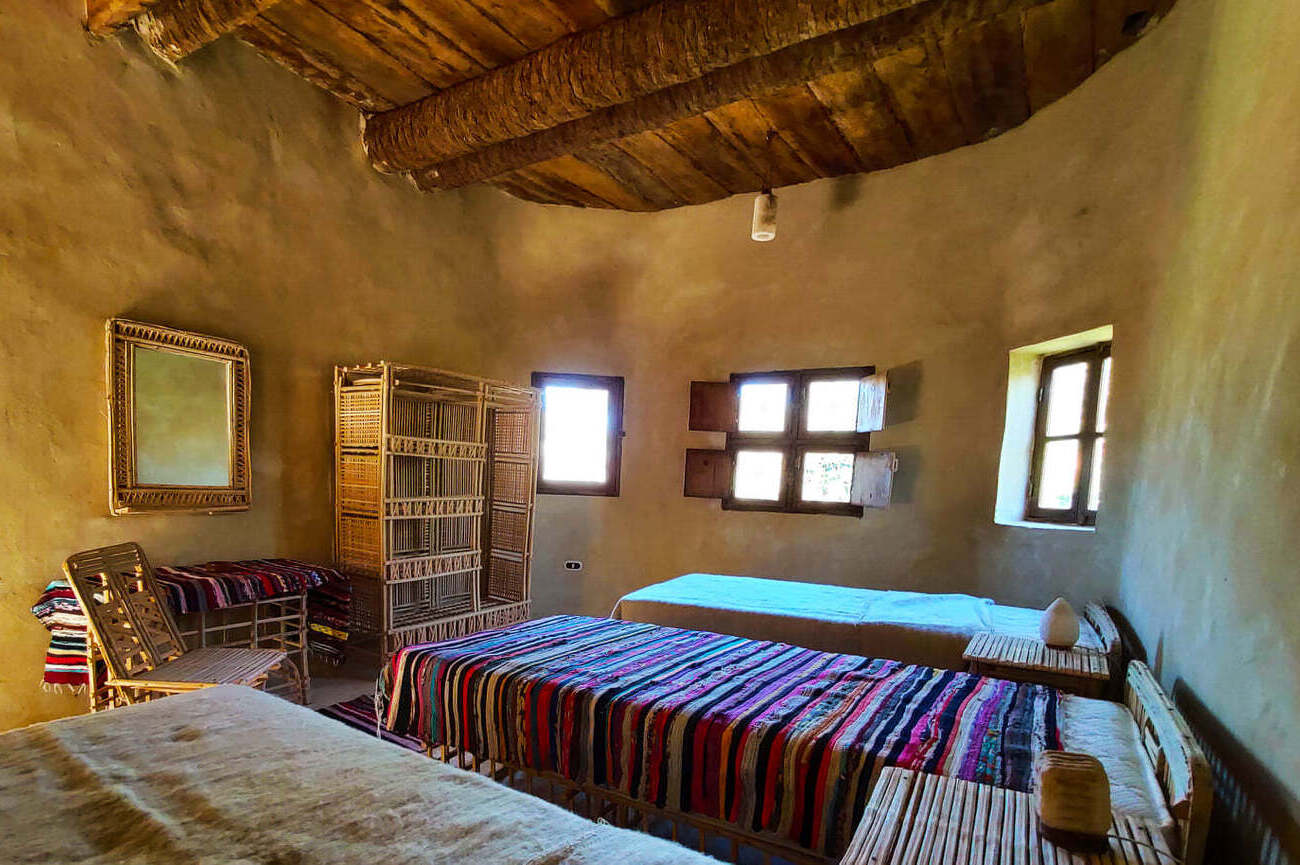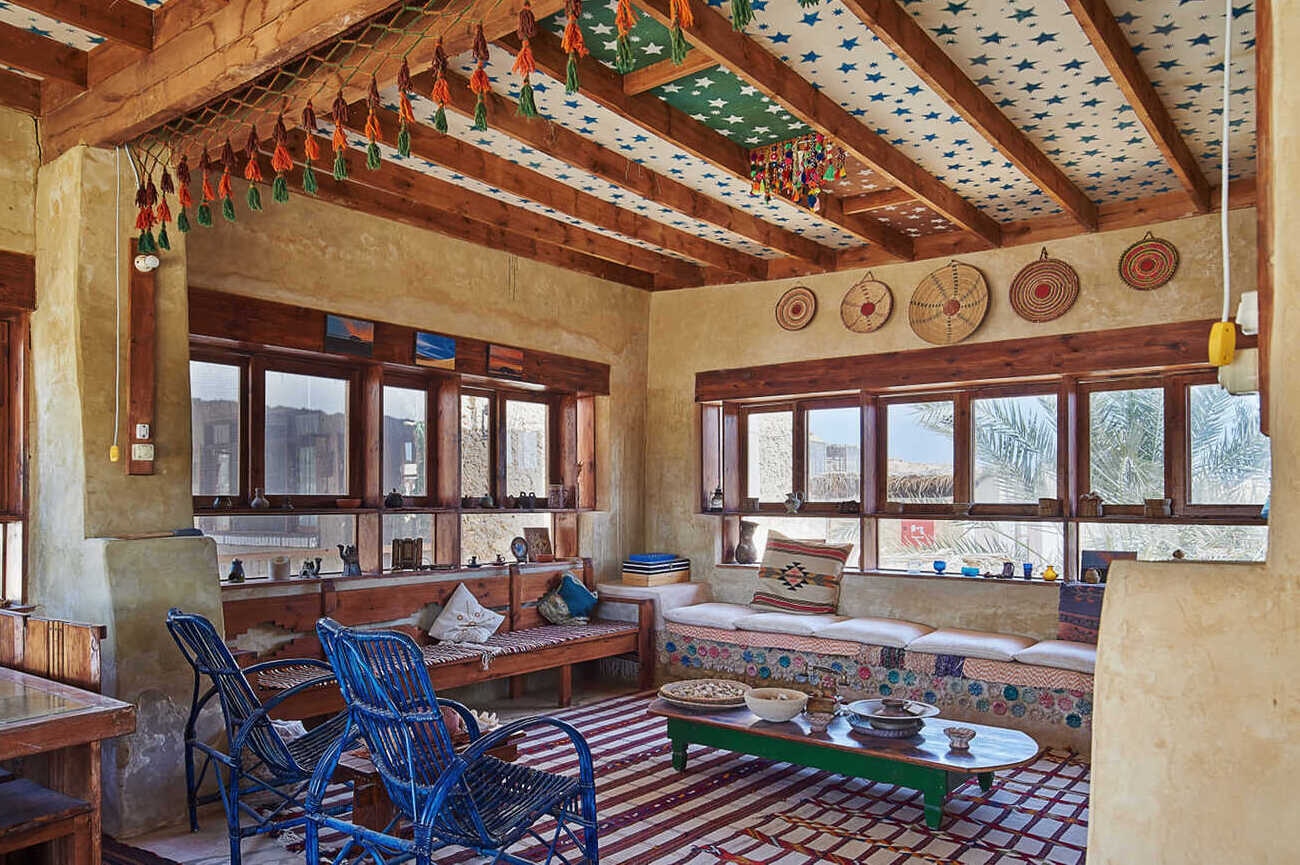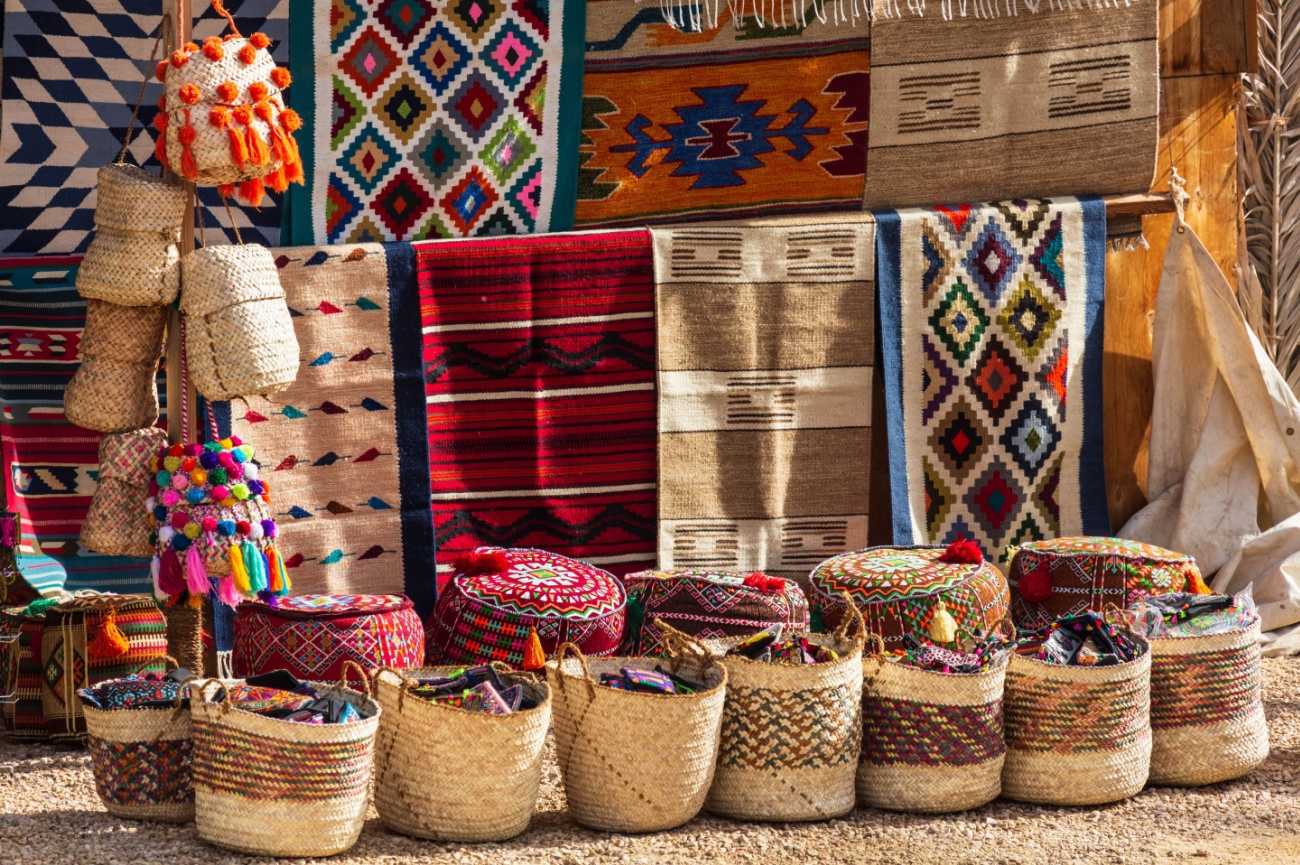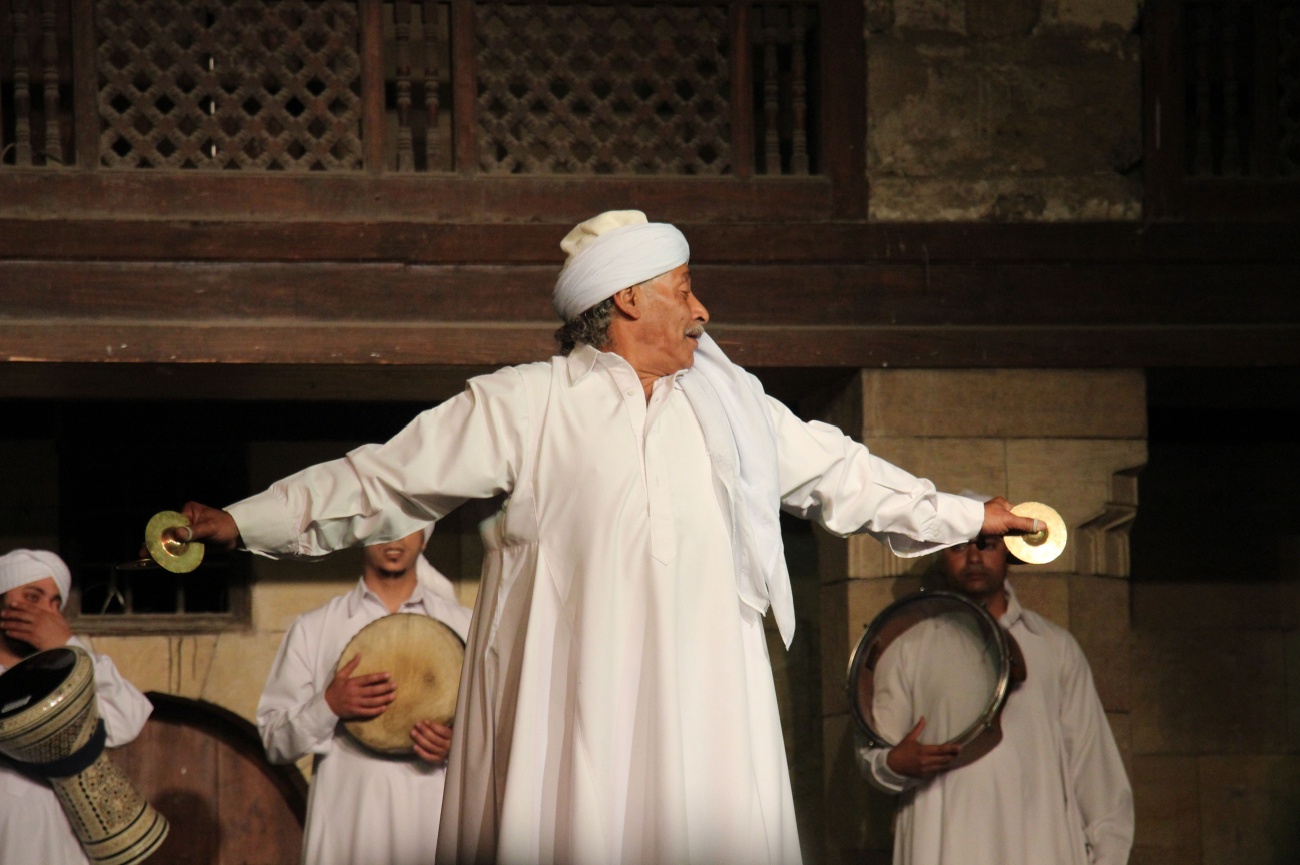Things to Do in Siwa Oasis: 2-Day Itinerary
The Siwa Oasis might not be the easiest place to reach, but once you get there, you may not want to leave this remote paradise nestled in the southwestern part of Egypt. Lush palm trees, massive sand dunes, majestic hot natural springs, and serene salt lakes make Siwa Oasis one of Egypt’s most attractive destinations.
Surrounded by palm tree groves, Siwa Town is an ideal base to explore the isolated desert oasis. This laid-back rural town is home to a 13th century fortress, a small ethnographic museum, and the mystical Temple of the Oracle. You will also come across donkey carts, tuk tuks, and picturesque mud-brick houses. Venture outside the town gates to find hundreds of natural hot water springs, ruins of temples, tombs, and salt pools with crystal-clear waters.
In this 2-day travel itinerary, you will find a list of the best things to do in the Siwa Oasis, as well as tips on where to stay. As a bonus, we’ve added a few recommendations for things to do with kids and a list of the best places to eat in Siwa.
Day 1

Morning: Shali Fortress
In the morning, explore downtown Siwa and discover the town’s most important tourist attractions. Our first stop is the iconic Shali Fortress, a mud-brick fortress from the 13th century built from a mixture of salt rocks from the nearby salt lakes and mud bricks. Nestled on a hill to protect the citizens against Bedouins, Barbarians, and other invaders, the fortress was inhabited by Siwi Berbers who used to live within its walls for more than 800 years. A devastating heavy rain in the 19th century caused damage to the fortress and the people living inside the fortress had to move out.
Nowadays, the Fortress of Shali is a popular tourist attraction and you can climb to the top for amazing views of the city and the Siwa Lake in the distance. It takes about 10 minutes to get to the top of Shali. On your way out, you can check out the local shops downstairs selling everything from bath salts, dates, and olive oil to carpets, clothes, and souvenirs. The entrance to the fortress is free of charge.
The Great Mosque
You will find the oldest and the largest mosque in Siwa just above the entrance to the Shali Fortress. Built in the 13th century during the reign of King Farouk, the mosque is known for its unique minaret designed in a shape of a chimney. The minaret was actually added in the 17th century. You can take photos of the beautiful minaret from the outside or explore the interiors during prayer times when the mosque is open to worshipers.
The Traditional Siwa House
Situated inside one of the oldest houses in Siwa that is built from dried mud and salt rocks, the Traditional Siwa House is an internationally funded museum where travelers can learn interesting facts about the history of the Siwa Oasis. Step inside the museum to see a collection of everyday objects ranging from clothes and pottery to silver jewelry, handmade baskets, and traditional musical instruments. There is also a small photo gallery and a local library right next door.
Day 1, morning - siwa oasis Walking Tour Map
Afternoon:
Al-Mawta Mountain (Mountain of the Dead)
Located just to the north of downtown Siwa, the Mountain of the Dead is your first stop in the afternoon. Also known as Gebel al-Mawta, the small mountain is home to a few tombs that date back to the Ptolemaic and Roman times. Although not as grand as burial sites in Giza and Dahshur, these tombs feel more authentic. Visit the tomb of Si Amon, a Greek merchant who decided to spend his life in Siwa. Inside the tomb, you will find adorable paintings of Egyptian gods and goddesses. The tomb of Niperpathot and the burial site of Mesu Isis are also worth visiting. Inside the last tomb on your way up to the top of the mountain, you will see a painting of a crocodile god, Sobek. What’s interesting about the tombs in Siwa is that most of them were discovered by accident when local residents found shelter from Italian bombs in WW2 on Al-Mawta Mountain.
Amon Temple
You are now in front of the most important temple in Siwa, the Amon Temple. Once visited by Alexander the Great, the Temple of the Oracle was heavily damaged in the 19th century when an Ottoman governor decided to destroy the entire structure. Nowadays, visitors can explore the ruins of this magnificent temple and enjoy views of the Siwa Oasis and its surroundings. The entrance to these ruins will set you back 120 EGP.
Temple of Umm Ubayd
The next stop on your afternoon travel itinerary in the Siwa Oasis is located just a short walk from the Amon Temple. Welcome to the ruins of the Temple of Umm Ubayd, a historical site that sits amongst a palm grove. Although the temple is mostly in ruins, you can still see an impressive part of a wall decorated with intricate carvings of Egyptian gods and warriors. There are also a few stones with reliefs scattered around the single wall.
Day 1, afternoon - siwa oasis Driving Tour Map
Day 1, afternoon - siwa oasis Walking Tour Map
Day 2

Morning:
Cleopatra Spring
In the morning, visit the most popular natural spring located within the Siwa Oasis. It will take you about 10 minutes by car to get from the center of Siwa to Cleopatra’s Pool. It is an ideal place for a refreshing bath and the entrance to the site is free of charge. This natural hot spring is quite deep, so you should be careful when visiting Cleopatra Spring with the little ones. There are a few cafes that surround the spring where you can sit and eat or have a drink. Don’t leave before trying the local fresh mango juice with basil.
Gabal Dakrur
Just south of Cleopatra, travelers will find the foot of the mountain Dakrour. For panoramic views of the Siwa Oasis and the desert, we recommend climbing the mountain. Along the way to the top, you will come across fossils of shells which are quite impressive. The easiest way to climb Gabal Dakrur is from the eastern side. The most popular time to visit Gabal Dakrur is during the full moon in October when the locals are organizing a party on the top of mountain.
Almaza Hot Spring
You will have to pay a small entrance fee to enter this camp which is known for its hot spring. Enjoy the Bedouin lifestyle and go for a dip in the warm waters of the Almaza Hot Spring. Visitors like that this natural hot spring is open until 10 PM and add that you can even bring your own (non-alcoholic) drinks here. We should mention that the site gets busy due to the tour buses from downtown Siwa.
Day 2, morning - siwa oasis Driving Tour Map
Day 2, morning - siwa oasis Walking Tour Map
Afternoon: Salt Lakes
Discovered back in 2011 as part of a large salt mine, the Salt Lakes in the Siwa Oasis have become the region’s most visited tourist attraction. You will find multiple picturesque salt pools with emerald-blue waters just 10 kilometers from downtown Siwa. The salinity of these lakes is over 90%, which means that visitors can float effortlessly here. Surprisingly, there is no entry fee when visiting these beautiful salt lagoons! While there are large salt pools in the area, we suggest driving further into the salt mine to find smaller and quieter pools that you will probably have all for yourself.
Hayaat Siwa Hot Spring
Located on the edge of the desert, Hayaat Siwa is one of the most remote hot springs in the Siwa Oasis. It is actually a camp/hotel, but you can visit the site without having to book a room and spend the night. The hot spring is warm with the water temperature around 38 degrees. There are showers, toilets, and a few cold water pools. In the evening, the camp organizes different events under the stars ranging from romantic diners to live music performances. Since you are visiting in the daytime, we suggest hiking to the top of the sand dunes and enjoying magical views of the entire oasis.
Fantasy Island
Your last stop is a picturesque island located on the edge of Siwa Lake. Commonly known among tourists as Fantasy Island, Fatnas is where people come to enjoy magnificent sunset views and vibrant colors reflecting off the turquoise waters. You will find 2 cafes, each fitted with cute hammocks, chairs, and even a fire pit. Both cafes get very busy, so you should plan your visit to Fatnas Island at least one hour before the sun sets over the horizon. Travelers visiting the island can also join activities such as guided meditation sessions and yoga classes.
Day 2, afternoon - siwa oasis Driving Tour Map
Other Things to See and Do in Siwa Oasis
- Bir Wahed Sulphuric Hot Spring: Visit this mini-oasis area with a hot spring pool and a lake with cold waters in the Siwa Oasis. Bir Wahed Sulphuric Hot Spring is located in the middle of the desert and you will need a 4x4 vehicle to get to the site. In addition to swimming in the pools, visitors can enjoy snacks and drinks at the on-site café.
- Desert Safari: No trip to The Siwa Oasis is complete without booking a desert safari tour. Hop inside a 4x4 vehicle with one of the local tour operators and discover a variety of landscapes ranging from sand dunes to hot springs in the middle of the desert. There are two types of desert safari tours to choose from in Siwa: a tour to the sand dunes near Siwa and a trip to Bir Wahed.
- Sandboarding: The Sawa Oasis is known for its incredible sand dunes reaching heights of up to 150 meters. It is a perfect place to try sandboarding and enjoy majestic views of the surrounding desert landscape. Book a sandboarding tour with one of the local tour agencies and discover the best sites for sandboarding in Siwa. Since dunes in Siwa come in different shapes and sizes, there are many boarding expeditions run by professional guides to choose from. Whether you are a beginner or a seasoned sandboarder, you will easily find a sand dune slope for your skill level.
Day Trips from Siwa Oasis
Due to its remote location in the middle of the desert, the Siwa Oasis is far away from most of the other touristy places in Egypt. For example, the closest major Egyptian city to Siwa is Alexandria, but it takes 7 hours to get there by car. To reach Cairo, you will need to drive for 8 hours. If you are searching for a day trip from Siwa, we suggest booking a trip to Marsa Matruh, the go-to beach vacation spot for both Egyptians and tourists. Marsa Matruh is home to some of the best beaches in the country such as Cleopatra, Al Awam, Lover Beach, and Ledo Beach. Don’t miss the Ageeba Beach, a beautiful cove nestled between two white cliffs. It takes 3 hours and 40 minutes to get to Marsa Matruh from downtown Siwa.
Things to Do with Kids in Siwa Oasis
- Issa Salt Factory: There is no shortage of souvenir shops and bazaars in Siwa, but our favorite one is definitely the family-owned Issa Salt Factory. Take your kids to this hidden gem located just a short walk from the center of Siwa to find everything from salt sculptures to wood works. The workshops where these souvenirs are made are just a few steps from the factory, which means that everything you purchase here is authentic. For your kids, we recommend getting the tasty Arabian gum.
- Take a Donkey Cart Ride: While motorized vehicles are quite common in the Siwa Oasis today, there was a time when the donkey was the main means of transportation in the region. To see the city of Siwa together with your kids from a different perspective, take a donkey cart ride. You will find these donkey cart rides in Siwa’s central square. Each cart comes with different decorations and knowledgeable guides who will tell you a bit of history about the Oasis during the ride. If you are staying outside the downtown area, you can always ask for your accommodation or organize a donkey cart ride.
- Wander Through Siwa Town: The Siwa Oasis offers a wide range of attractions, from natural hot springs and ruins of temples and tombs to salt lakes and mountains. However, Siwa town itself and its narrow streets lined with cafes, bakeries, and souvenir shops, is also worth exploring. There is not much traffic in downtown Siwa, which means that you can easily explore the town with your kids without having to worry about busy car traffic. Whether you wish to climb to the top of the fortress, purchase authentic souvenirs, or see traditional clothing and musical instruments at the town’s museum, there is so much to do and see in the center of Siwa town.
Where to Eat in Siwa Oasis
- Abdu Restaurant: If you are searching for a popular place to eat in the heart of Siwa town, visit this traditional restaurant that serves a variety of Egyptian and Siwan dishes. Abdu Restaurant is a touristy place, attracting large crowds of travelers, so it is always good to book a table in advance. The décor is beautiful with cave-like vibes and a nice terrace for alfresco dining. On the menu, you will find local delicacies such as vegetable couscous, baba ganoush, falafel, and hummus. If you are craving meat, order chicken with rice or try the shish kebab. Save some space for dessert and try Abdu’s signature banana pie. The drinks list is extensive with favorites such as smoothies with dates and mango juice.
- Ola Restaurant: In terms of décor, Ola with its picturesque garden surrounded by palm trees is probably the most beautiful dining establishment in the center of Siwa. If you are visiting for breakfast, try their Egyptian breakfast which includes cheese with tomato, fava beans, omelet, and jam. Travelers feeling adventurous can order the restaurant’s signature Siwan camel stew with rice. Other popular dishes here include baba ganoush, beef with lemon sauce, and molokhya soup. As for the drinks list, it includes everything from seasonal fruit juices to mint/anise tea.
- Bedouin - Roof Restaurant: For awesome views of the Shali Fortress and tasty Libyan/Egyptian cuisine, book a table at this lovely restaurant in downtown Siwa. You will be dining on their tastefully decorated rooftop terrace. The menu is extensive with options such as Egyptian Breakfast (hibiscus jam, foul, egg, tamaya, zatar, salad zibadi, and olives), Libyan pasta, grilled chicken, and seafood pasta. The Moroccan soup is definitely worth ordering, as well as the kofta sandwich and hummus salad. For dessert, we recommend sweet couscous with nuts or pancakes with Nutella dates.
- Abu Ayman Restaurant: For reasonably priced homemade Egyptian food, visit Abu Ayman Restaurant. Located in the center of Siwa Town, this restaurant attracts mostly locals. Compared to the touristy restaurants in Siwa, Abu Ayman lacks in terms of décor. However, visitors say how the food is delicious, homemade, and served in big portions. The star of the show is the mouthwatering grilled ribs. The restaurant also served Egyptian dishes like lamb soup, molokheya, chicken tagine, kofta, shish chicken with rice, tahini, and kebab.
- Muhra: Located within a camp in the center of Siwa, this intimate dining establishment with a beautiful rustic garden specializes in fish and seafood delicacies. Guests like the cute courtyard with colorful plants and rustic wooden chairs/tables. On the menu, you can choose between dishes like baba ganoush, shrimp with rice, grilled mackerel, and chicken with rice and veggies. If you wish to spend the night, Muhra offers lovely tents for accommodation.
- Tekeyet Elamir Restaurant & Café: With its magical sandy courtyard and a tastefully designed interior dining area, Tekeyet Elamir Restaurant & Café looks absolutely stunning. The owner spent most of his life in Germany and decided to move to Siwa and open this lovely restaurant and café. The salt crystal lighting, funky music playing from the speakers, and floor covered with salt to keep the mosquitos away provide a nice setting for an unforgettable dining experience. What’s good to order? The restaurant specializes in earth oven-baked meat dishes (lamb, chicken, and duck). You can also try their chicken with olives or the Alexandria-style liver. If you wish to try some of their signature soups, we recommend Harira Soup.
- Uncle Moheb: This is the best place in Siwa for tasty Lebanese dishes and BBQ delicacies. Uncle Moheb is a family-owned restaurant with dim lighting, lamps hanging from the ceiling, and homemade Lebanese dishes. The meat is grilled outside to your liking and served on big plates. You can try their chicken with homemade Lebanese sauce or order a portion of goat tagine.
- Al Bab Inshal Restaurant: Located just a few steps from the Shali Fortress, Al Bab Inshal is a wonderful restaurant known for its rustic décor and delicious Egyptian cuisine. The floor lamps here are made of salt and the building itself looks spectacular. On the menu, visitors will find dishes like chicken cooked with potatoes and olives, baba ghanoush, and molokhiya.
- Koshary Karim: If you are a fan of koshary, make a reservation at this romantically lit restaurant with comfy cushions in Siwa. The restaurant’s nicely decorated outdoor patio is an ideal place for a romantic dinner. What’s good to order here? The menu is small, but each dish is crafted to perfection. Bursting with flavor and texture, their koshary is delicious. Other popular dishes at Koshary Karim include liver sandwich and rice pudding.
Where to Stay in Siwa Oasis
- Adrére Amellal: Travelers searching for luxurious accommodation when visiting Siwa can book one of the 39 rooms at the stylish Adrére Amellal. This boutique hotel is divided into nine traditional kershif buildings and boasts a spring-fed pool. Many celebrities and royalty have spent the night at Adrére Amellal, making it one of the most popular places to stay in Siwa. Keep in mind there is no electricity here, only beautiful lanterns and candles that are spread throughout the property. Rooms are nicely furnished with a fireplace, king-size beds, and hand-woven rugs. At the front desk, guests can book different activities and tours including a visit to the salt lakes, mountain hikes, desert safari, and tours of the nearby temples. With no TV and Wi-Fi, it is an ideal place to disconnect and enjoy the desert surroundings.
- Taghaghien Island Resort Siwa: You will find this idyllic resort on an island in Siwa Lake. From a magical rooftop restaurant with spectacular sunset views and a 4-meter-deep Roman Cold Spring to 30 bright and nicely decorated bungalows and a lavish lobby, the resort has everything needed for an unforgettable stay in the Siwa Oasis. Guests can rent kayaks/boats on the lake, go for a dip in the cold spring, and explore the nearby islands of Byout, Middle Stone, and Shosha.
- Taziry Ecovillages Siwa: Nestled on the shores of Siwa Lake, Taziry Ecovillages Siwa is where you can fully disconnect from everyday life and connect with the peaceful desert surroundings. You will be staying a 20-minute drive from downtown Siwa right underneath the Red Mountain. There is no electricity here, only candles and oil lamps that light up the property at night. Solar panels are used to provide hot water for the bathrooms. Go for a dip in the massive spring-fed pool, enjoy wonderful views of the oasis and Sahara desert, and try North African/Siwan cuisine prepared by the hotel’s award-winning chef from Morocco. Rooms are lovely and fitted with hand-woven rugs, comfy beds, and a private veranda. In case you get bored, arrange nearby activities like desert safaris, mountain hiking, and guided tours of the tombs and temple ruins at the front desk.
- Mountain Camp Ali Khaled: Offering reasonably priced accommodation at the foot of Dakrour Mountain, this camp boasts an outdoor pool and two natural springs (hot and cold) where guests can unwind after exploring tourist attractions in the Siwa Oasis. In the evening, the camp organizes bonfires with live music. Guests like the breakfast which is included in the price and add that the eco lodges and nicely furnished. If you are staying with kids, the little ones can play with animals such as rabbits, geese, and birds.
- Cafour House Siwa: Located between the Salt Lakes and Siwa Town, Cafour House Siwa is a perfect place for a peaceful vacation. You will have access to a swimming pool, a natural hot spring, and a beautiful garden with hammocks. The campground also offers a dining area, a fireplace in every room, and an on-site restaurant that serves delicious Egyptian dishes. If you wish to stay in shape, fitness and yoga classes are organized daily on-site. Traveling with the little ones? You’ll be pleased to hear that Cafour House Siwa features a small playground and a picnic area. In the evening, the host organizes bonfires and live music performances inside the campsite.
- Albabebshal lodge: If you prefer to stay downtown Siwa, make a reservation at the Albabebshal Lodge. Adjacent to the ancient Shali Fortress, this heritage hotel offers 14 beautiful rooms with private bathrooms. The property also has a lovely restaurant with BBQ facilities and an upstairs terrace with views of the fortress. The hotel’s central location makes it easy to explore the town on foot.
- Siwa Safari Gardens Hotel: The next property on our list is located just a 5-minute walk from the center of Siwa Town and a short drive from the Cleopatra natural hot springs. This boutique family-owned hotel offers a natural water pool surrounded by a lovely garden with palm trees. Rooms are spacious and furnished with large beds and hand-woven carpets. Breakfast is included in the price and dinner can be ordered a day in advance. The manager, Suzie, is a wonderful host and always more than happy to arrange tours of the nearby springs, lakes, and temple ruins.
- Sleep in Siwa: An oasis within the oasis, the guesthouse is located on the outskirts of Siwa town. It takes about 5 minutes by tuk-tuk to reach the downtown area. Other natural attractions are just a short drive away. The property itself is lovely with a well-maintained garden, a majestic rooftop terrace where guests can enjoy sunset views, and cozy rooms furnished in traditional Siwa style. The host, Ahmed, prepares a delicious breakfast in the morning and provides great advice on activities in the Siwa Oasis. Not only does he give advice about what to visit and how, but goes above and beyond by actually helping travelers arrange everything.
- Talist Siwa: Looking for an eco-friendly hotel in Siwa that is all about sustainability and solar power? Book a room at Talist Siwa, an eco-lodge/boutique hotel with beautifully furnished cabins, a picturesque garden, and an outdoor swimming pool. Electricity isn’t always available at the property. Instead, the eco-lodge relies on solar energy. There are no power outlets apart from USB sockets in the rooms, but you can charge your laptop/phone in the common area. Meals are prepared daily and ingredients are sourced from the owner’s farm, which means that everything you eat here is super fresh. Nature lovers will be delighted to hear that the most popular activities at Talist Siwa include stargazing and watching the sunrise. The property provides candles and lamps (free of charge) in the evenings.
The Best Time to Visit Siwa Oasis
Due to its remote location out in the desert, the Siwa Oasis gets extremely hot, especially in summer (June to August) when temperatures are known to rise above 41°C. During this time of year, it can be quite difficult and unpleasant to explore the oasis as there is little shade. Therefore, we believe that the best time to visit the Siwa Oasis is from October to March when the weather is more moderate and pleasant for outdoor activities and exploring tourist attractions.
Siwa Oasis Festivals
- Siyaha Festival (Festival of Forgiveness): Also known as the Peace Festival and the Festival of Forgiveness, the annual Siyaha Festival takes place in October during the full Moon. It lasts for three days and includes everything from climbing Mount Dakrur and singing traditional songs to joining communal meals and dancing the night away.
